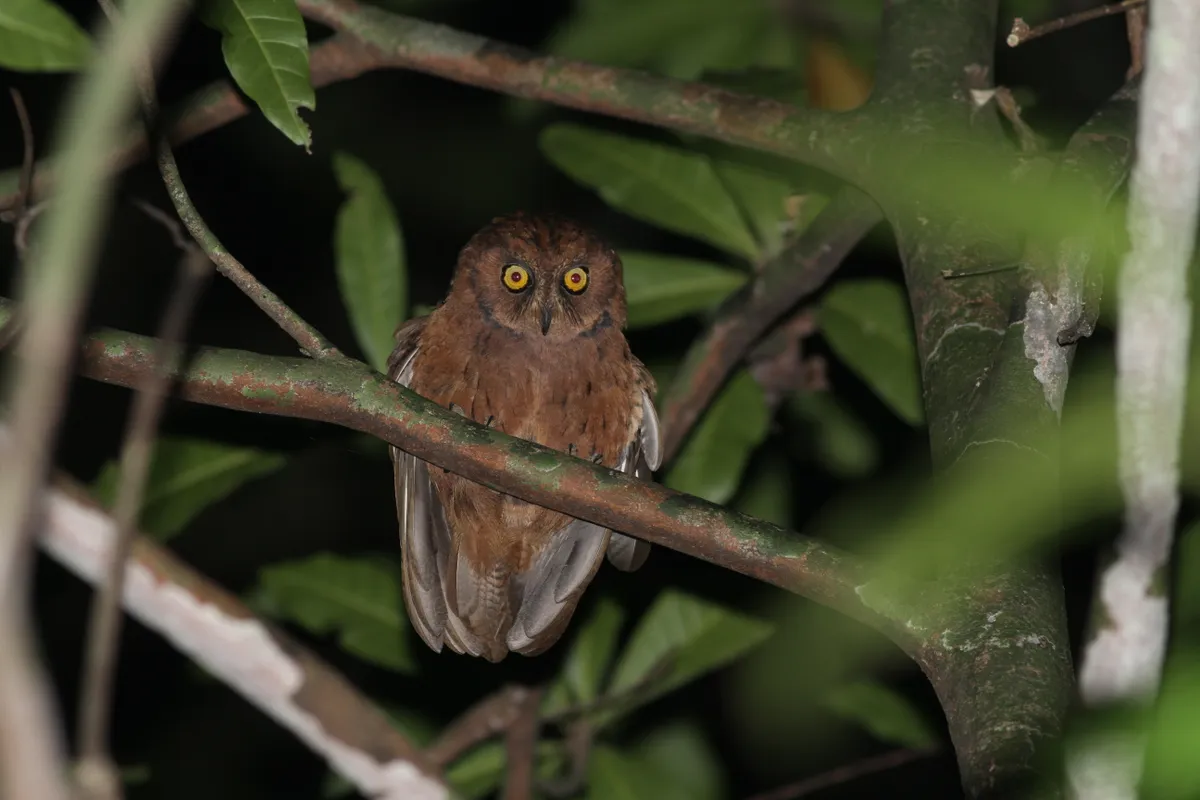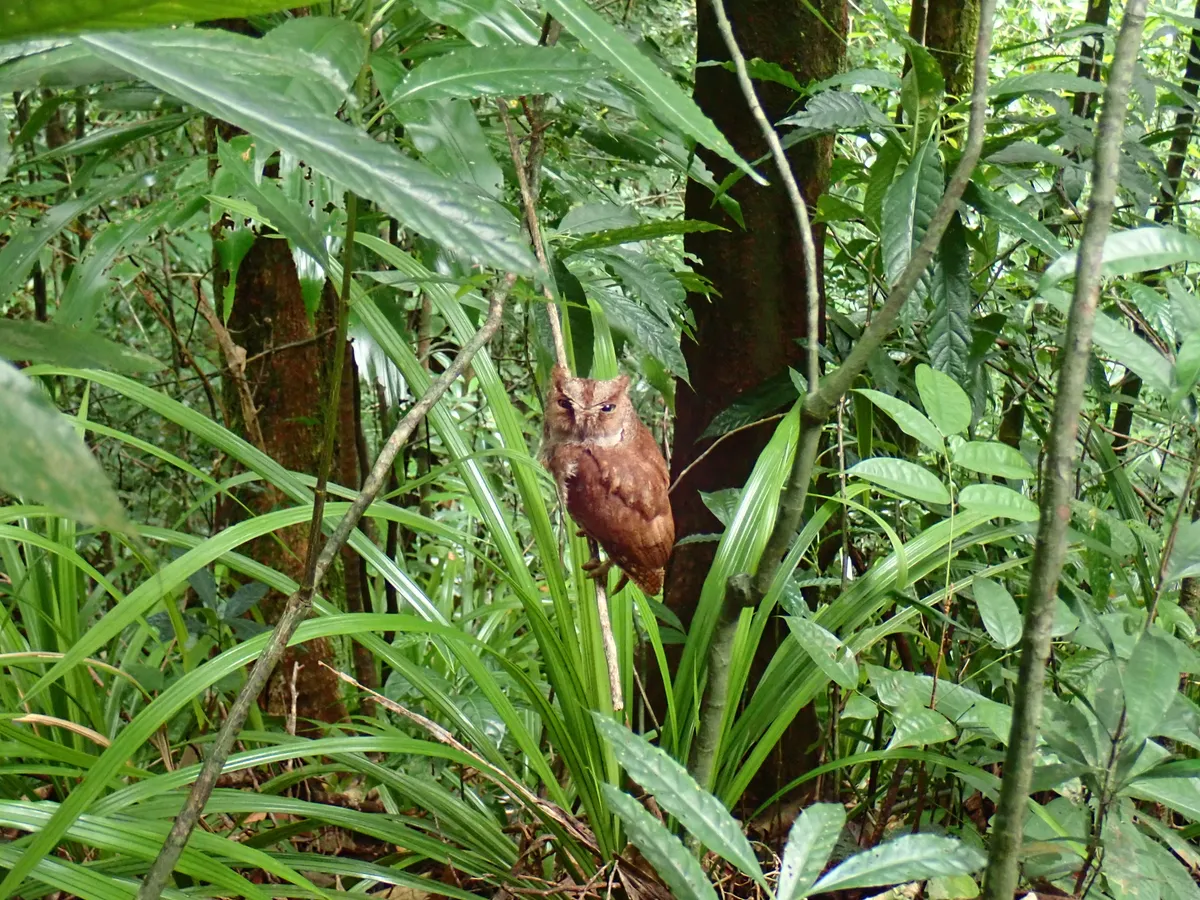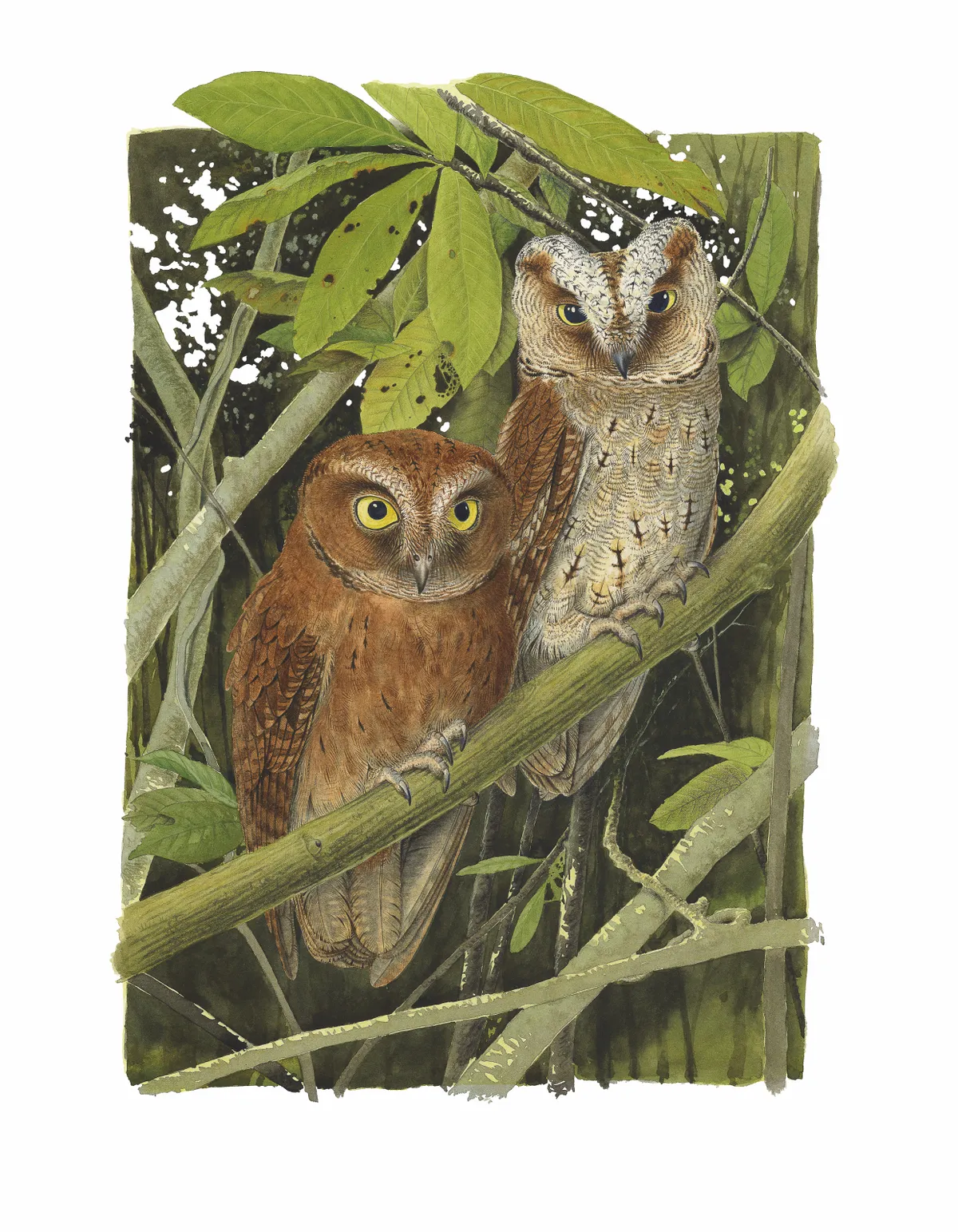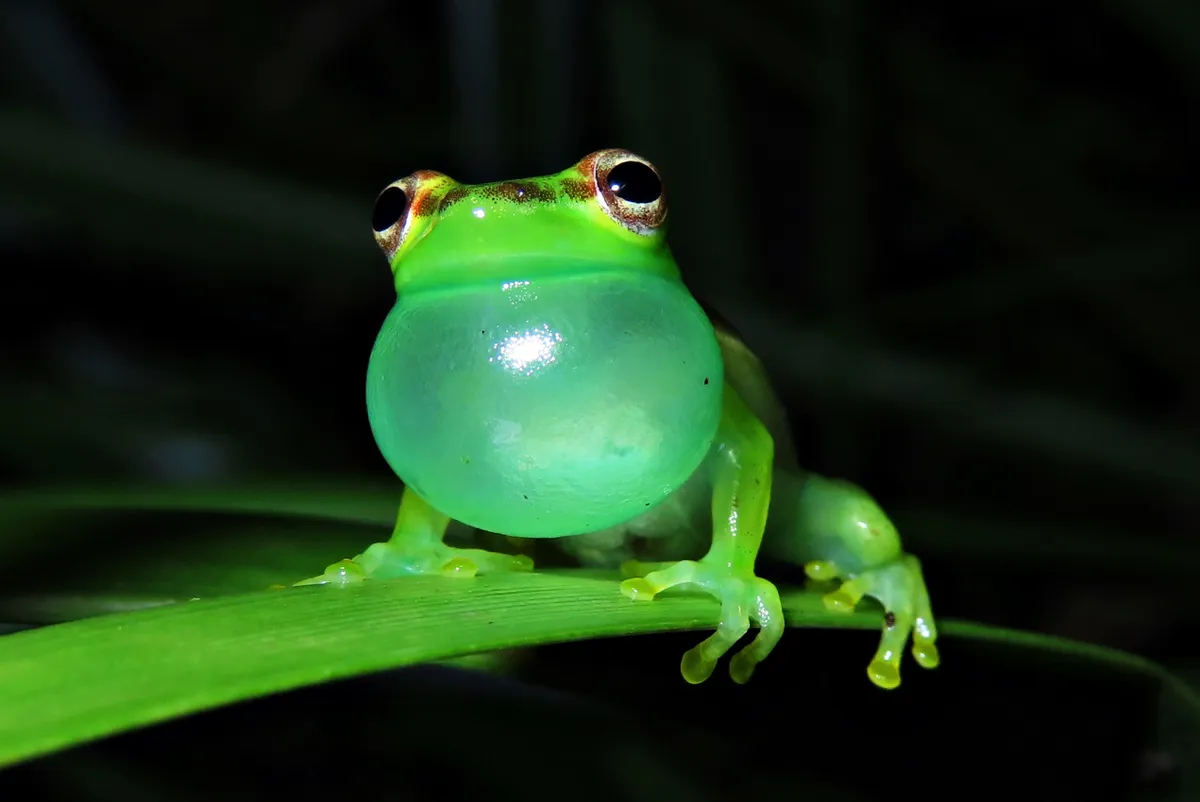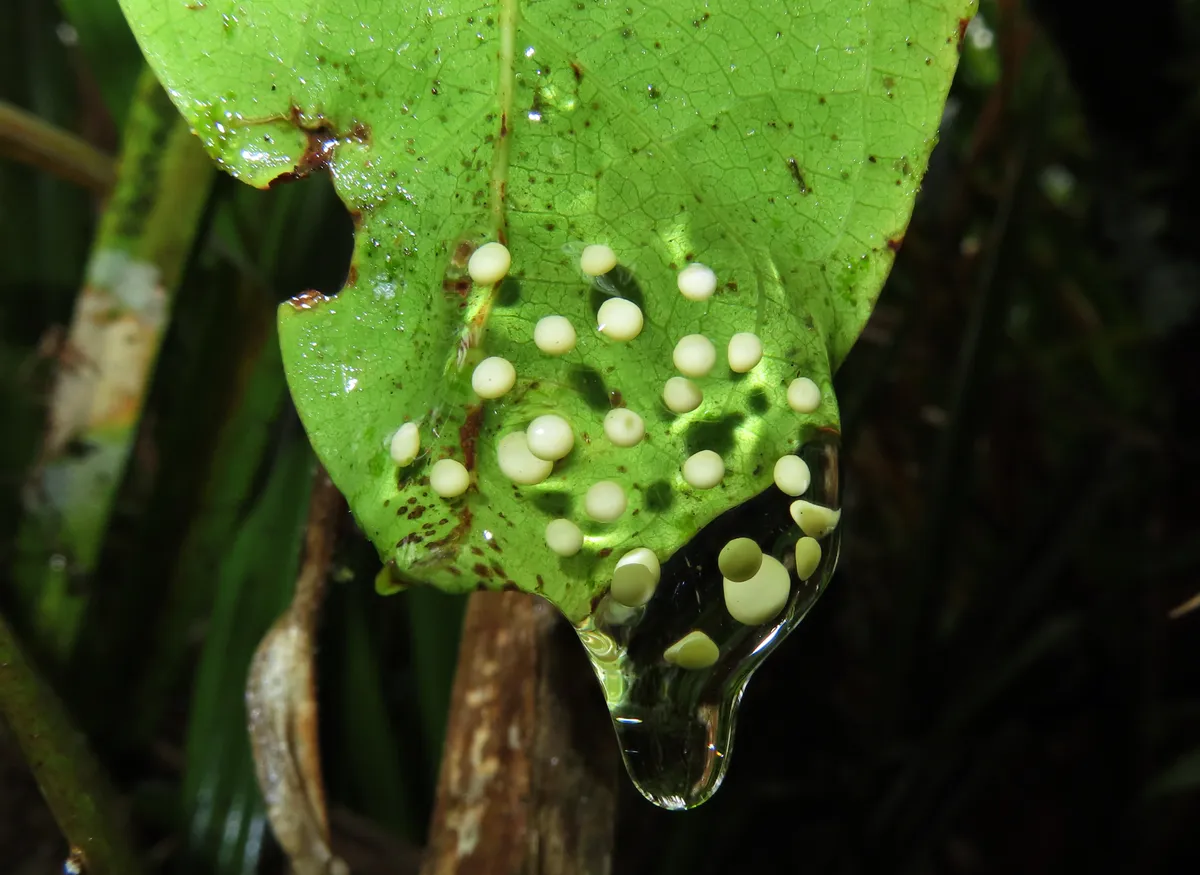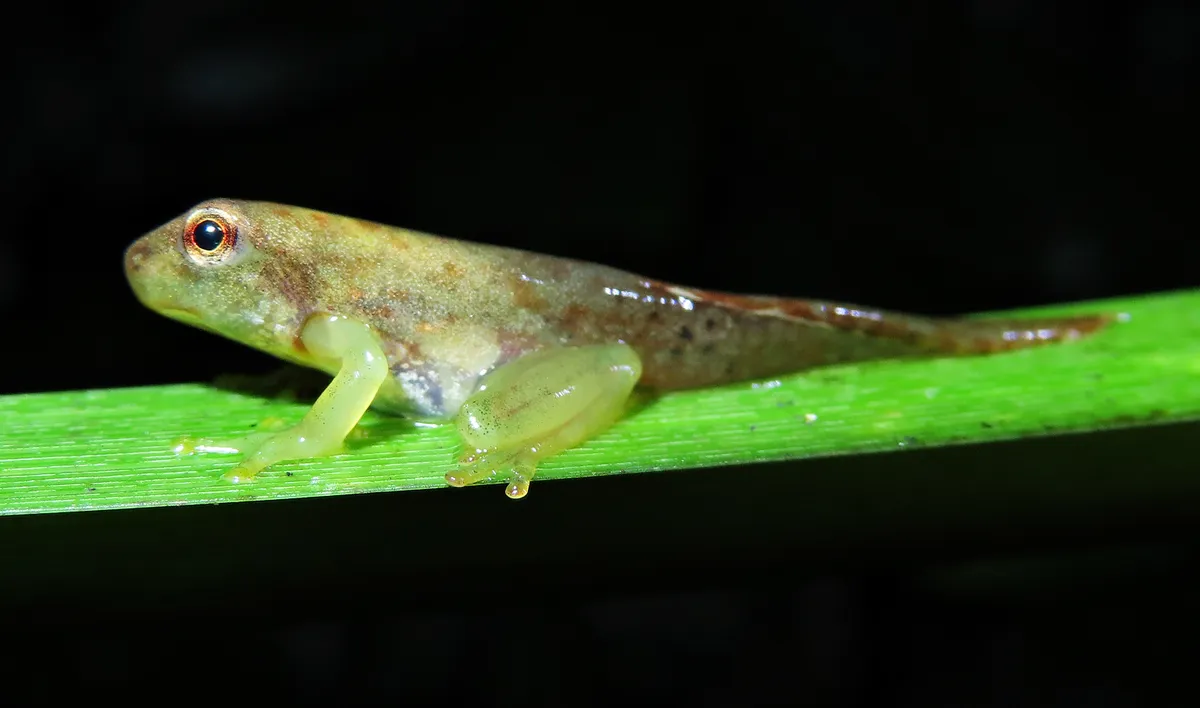Garrarnawun bush tomato (Solanum scalarium), Australia
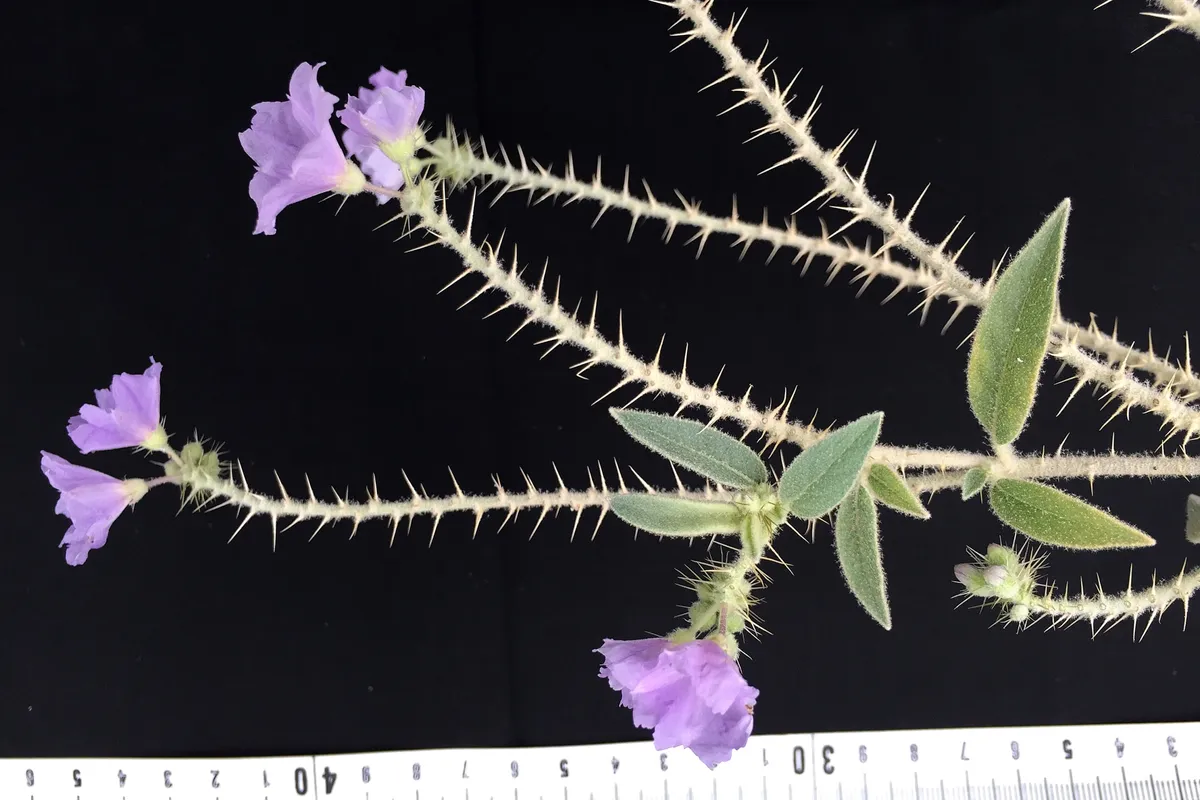
The newly described Garrarnawun bush tomato (Solanum scalarium) is part of the diverse Solanum genus, which also includes tomatoes, potatoes, aubergines and some of the nightshades. Although some bush tomatoes contain solanine and are poisonous, others have been a traditional food source for Aboriginal peoples.
The species was found in the Australian outback, alongside a trail leading up to Garrarnawun Lookout in Judbarra National Park in the Northern Territory. The Garrarnawun Lookout is a traditional meeting place of the Wardaman and Nungali-Ngaliwurru peoples, whose lands overlap here.
The Latin word ‘scalarium’ translates to ‘stairs’ or ‘ladder’, so the specific epithet refers to the human-made stone steps leading up to Garrarnawun Lookout. It also highlights the importance of making natural places accessible and references the ladder-like prickles on the flowering stems.
“This Latin name does relate to the appearance of this species, how it looks,” says first-author Tanisha Williams, a postdoctoral fellow at Bucknell University. “But it is also a way for us to acknowledge how important it is to create ways for people to interact with nature; not just scientists like us, but everyone.”
Read the full paper in PhytoKeys.
[highlight-box]You may also like:
- New species described this year
- New species described in 2021
- Speciation: what a species is, and how new species form
Insular treefrog (Litoria insularis), Papua New Guinea
[image id="73143" size="landscape_thumbnail" align="none" crop="171px,52px,1608px,1071px"] Litoria insularis. © S.J.RichardsLitoria insularis is a new species of frog described by two scientists from Australia. It’s part of the L. thesaurensis species group but detailed morphological and genetic analysis proved it to be an undescribed species.
It is known only from the Nakanai Mountains in New Britain, an island in Papua New Guinea. Found in only the single locality, it is described from just a couple of male specimens collected in 2009. As so little is known about this species the scientists recommend that it is listed as Data Deficient on the IUCN Red List.
The specific epithet of ‘insularis’ refers to the species’ limited distribution to both the island of New Britain and possibly to the Nakanai Mountains.
Read the full paper in Vertebrate Zoology.
Principe scops-owl (Otus bikegila), Democratic Republic of São Tomé and Príncipe
A new owl species (Otus bikegila) belonging to the scops owl genus has been announced by researchers.
One of the main clues leading to this species’ discovery was its distinctive call – a short “tuu” note which is rapidly repeated and sounds a bit like insect calls. Pairs of owls often emit this call as a duet at nightfall.
The common name of the species reveals its location – Príncipe Island, which is part of the Democratic Republic of São Tomé and Príncipe, off the coast of Central Africa.
As part of the scientists’ work, they surveyed all of the island to determine its distribution and population size and found that it was only living in the unhabituated southern area of the island, in the remaining old-growth forest. With such limited distribution, the scientists propose that the species is classified as Critically Endangered.
The specific epithet of ‘bikegila’ was chosen to honour Ceciliano de Bom Jesus, who is nicknamed Bikegila. He was a former parrot harvester on Príncipe Island, and is now a ranger of its natural park.
“The discovery of the Principe scops-owl was only possible thanks to the local knowledge shared by Bikegila and by his unflinching efforts to solve this long-time mystery,” the researchers say. “As such, the name is also meant as an acknowledgment to all locally-based field assistants who are crucial in advancing the knowledge on the biodiversity of the world.”
Read the full paper in ZooKeys.
Southern maned sloth (Bradypus crinitus), Brazil
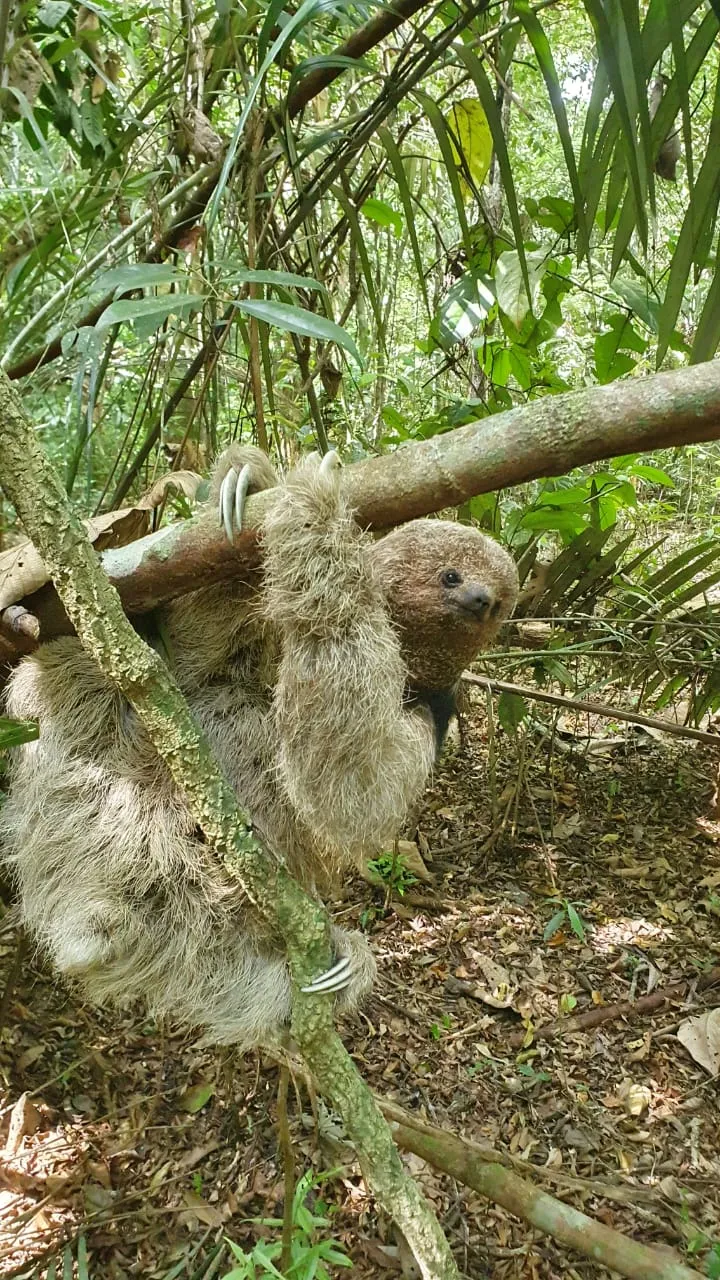
The overwhelming majority of new species described are plants, invertebrates, fish or amphibians, but every now and then, a mammal appears. And sometimes, it’s a surprisingly large one.
Scientist had previously thought there was just one species of maned sloth out there. However, a taxonomic review including morphological and DNA analysis, as well as field observations, revealed that there are actually two maned sloths – northern (B. torquatus) and southern (B. crinitus).
Both species are endemic to the Brazilian Atlantic Forest, with southern maned sloths found in Rio de Janeiro and Espirito Santo and northern maned sloths in Bahia and Sergipe.
The word ‘crinitus’ comes from the Latin word for hair, so approximates to ‘hairy’.
Read the paper in the Journal of Mammology.
Gecko (Lygodactylus fritzi), Madagascar
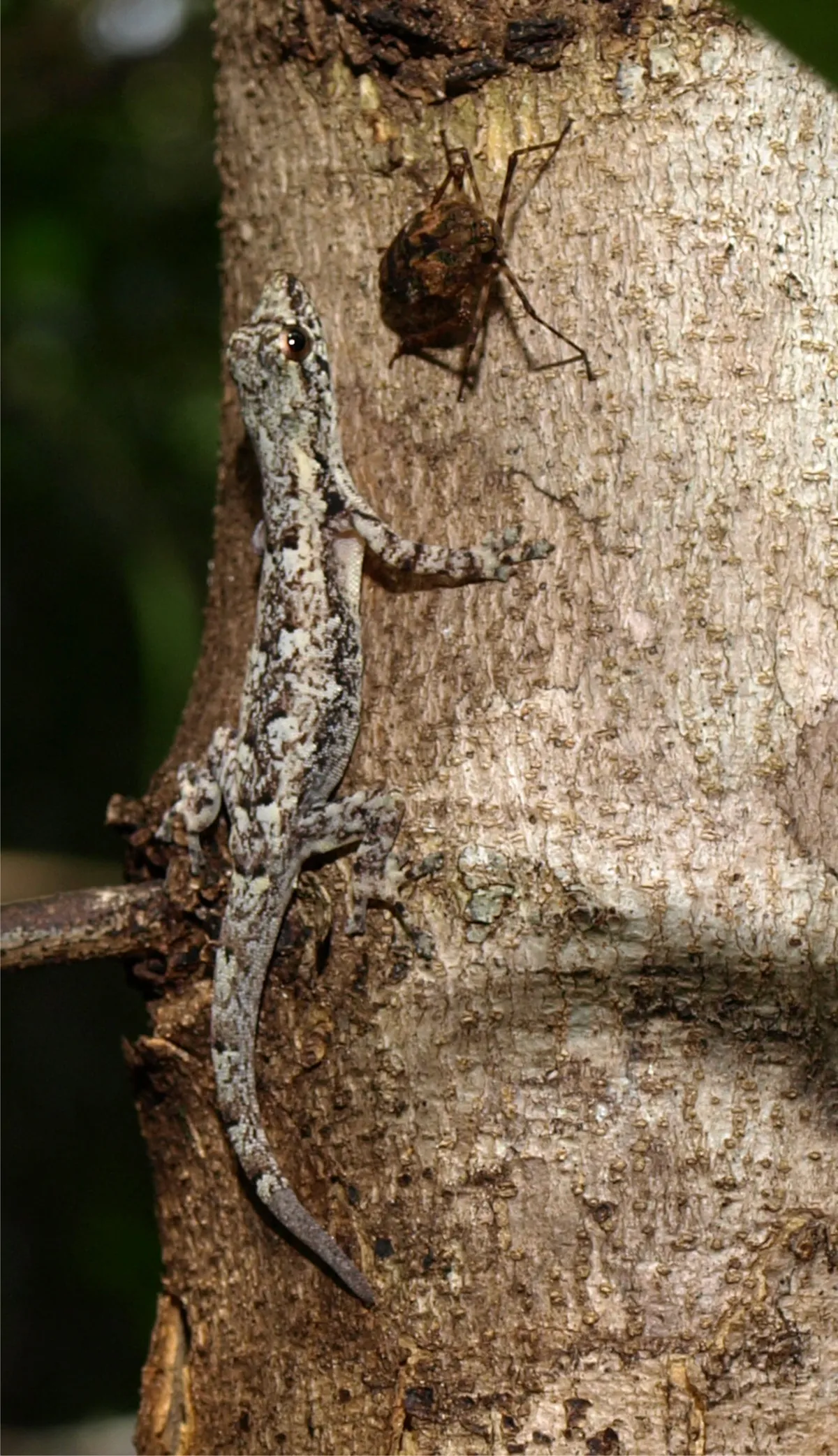
One of eight new species of small gecko discovered in Madagascar, each no longer than an index finger. Described by an international team of scientists in a new paper, Lygodactylus fritzi belongs to the subgenus Domerguella. The individual pictured was believed to have been consuming honeydew excreted by the bug next to it, a behaviour known from gecko species. All eight species are believed to be either endangered or critically endangered.
The species is known from new and historical specimens collected from just two coastal lowland locations in the northern central east of Madagascar. The littoral forested areas in Madagascar are very biodiverse with a range of endemic plants, amphibians, reptiles and insects, and more than 150 new species of reptile have been described from the East African island country in the last 30 years.
The scientific name ‘fritz’ is named after Uwe Fritz, director of the Museum of Zoology in Dresden, for his work on reptile taxonomy.
Read the paper in Zootaxa.
Tapir Valley Tree Frog (Tlalocohyla celeste), Costa Rica
This colourful frog is a new species of hylid frog, a family of frogs usually referred to as “tree frogs and their allies”, and was discovered on a rewilded nature reserve in Costa Rica. Formerly a cattle ranch, Tapir Valley Nature Reserve has been restored for 18 years by Donald Valera Soto and is home to Baird’s tapirs, peccaries and jaguars.
Whilst working in the wetland area of the reserve in late March 2018, he heard an unfamiliar frog call – a shrill call amongst the chorus of other frog species. After six months of searching for the frog making the call, he found this species – measuring just two centimetres long and hidden amongst tall grasses – and asked for help from herpetologists around the world to identify it.
Many believed it was the canal zone tree frog, but the call of the two frogs was different, so Donald continued searching on the reserve. Eventually he and a team found a male and female in amplexus (the mating embrace of frogs) and were able to identify which eggs belonged to them. After studying the morphology of both adults and tadpoles, and analysing the DNA of the species, it was confirmed as a species new to science.
The specific epithet of ‘celeste’ honours Río Celeste, a tourism icon for the cantons of Upala and Guatuso in Costa Rica, whilst the common name is derived from the reserve where the species was found.
Read the full paper in Zootaxa.
Playa scorpions (Paruroctonus soda and P. conclusus), USA
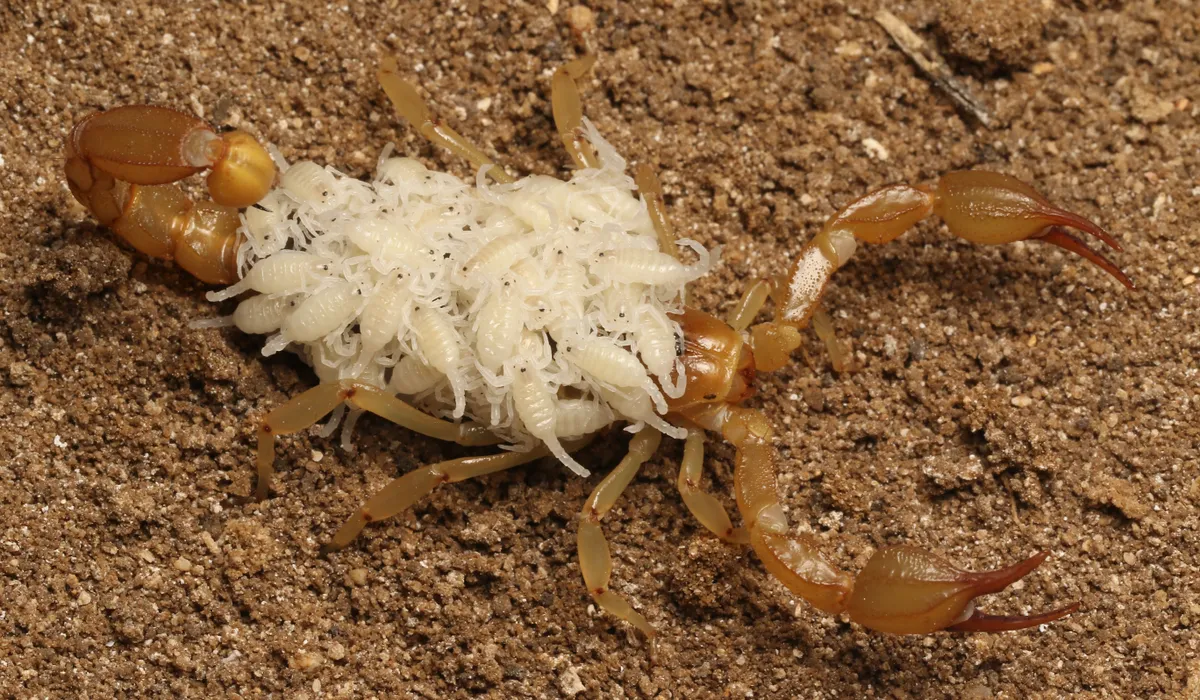
Two new scorpions recently discovered by two then-high school students from the California Academy of Sciences. Harper Forbes and Prakrti Jain were looking through observations of the community science platform iNaturalist when they came across an unidentified species. Following further research and fieldwork, it was identified as a new species, P. conclusus with their co-author Dr Lauren Esposito. And not long after, the trio came across another new-to-science scorpion via iNaturalist, now described as P. soda.
The two new species are playa scorpions, a group of scorpions found only in the playas, or dry lake beds, of Central and Southern California in the USA. It’s thought that each species is limited to the playas in which they were discovered.
The ‘soda’ epithet is derived from Soda Lake in California, where the species was found, as well as reflecting the highly alkaline soil in which it lives. The ‘conclusus’ epithet means ‘restricted’ or ‘confined’, and refers to the species’ limited range.
Read the full paper in ZooKeys.
Yidiyidi (Illyria viridis), Western Australia
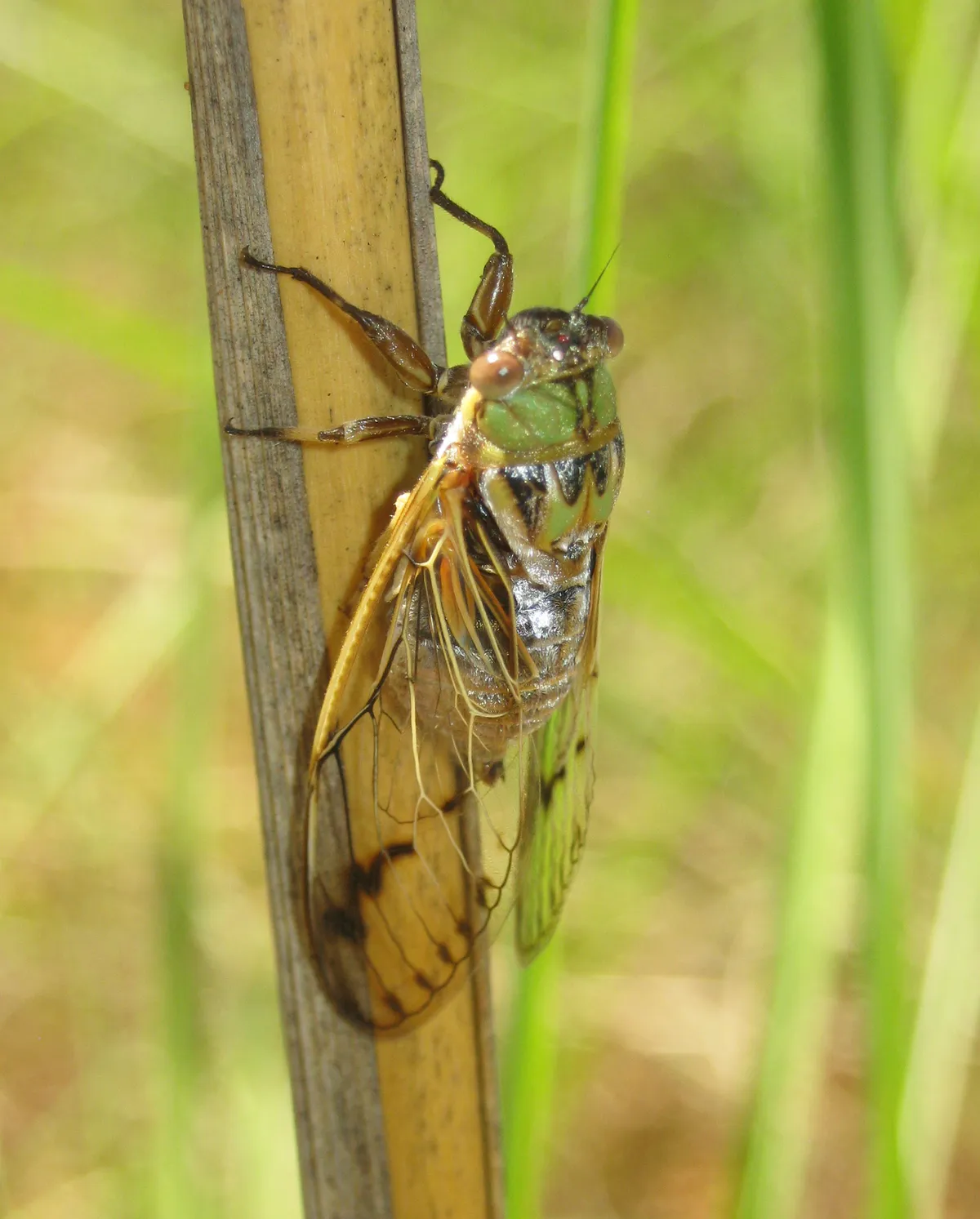
First formed in 1985 by Dr Max Moulds, the Illyria genus has consisted of just four cicada species for almost forty years. However, Moulds’ new paper adds this handsome cicada species to the genus – plus an additional 12 new species and five new genera to cicada taxonomy in Western Australia!
The newly described Yidiyidi cicada was already familiar to the the local Wuggubun people, a small Aboriginal community in the Kimberley region of Western Australia. It appears after the first rains in December, and males can be heard singing their “continuous, slightly rattle-like call” during the heat of the day and at dusk.
The common name of the species ‘Yidiyidi’ originates from the Wuggubun people, whilst the specific part of the scientific name ‘viridis’ means green and refers to the green colouration of this species.
Read the full paper in Zootaxa.
Giant water lily (Victoria boliviana), Bolivia
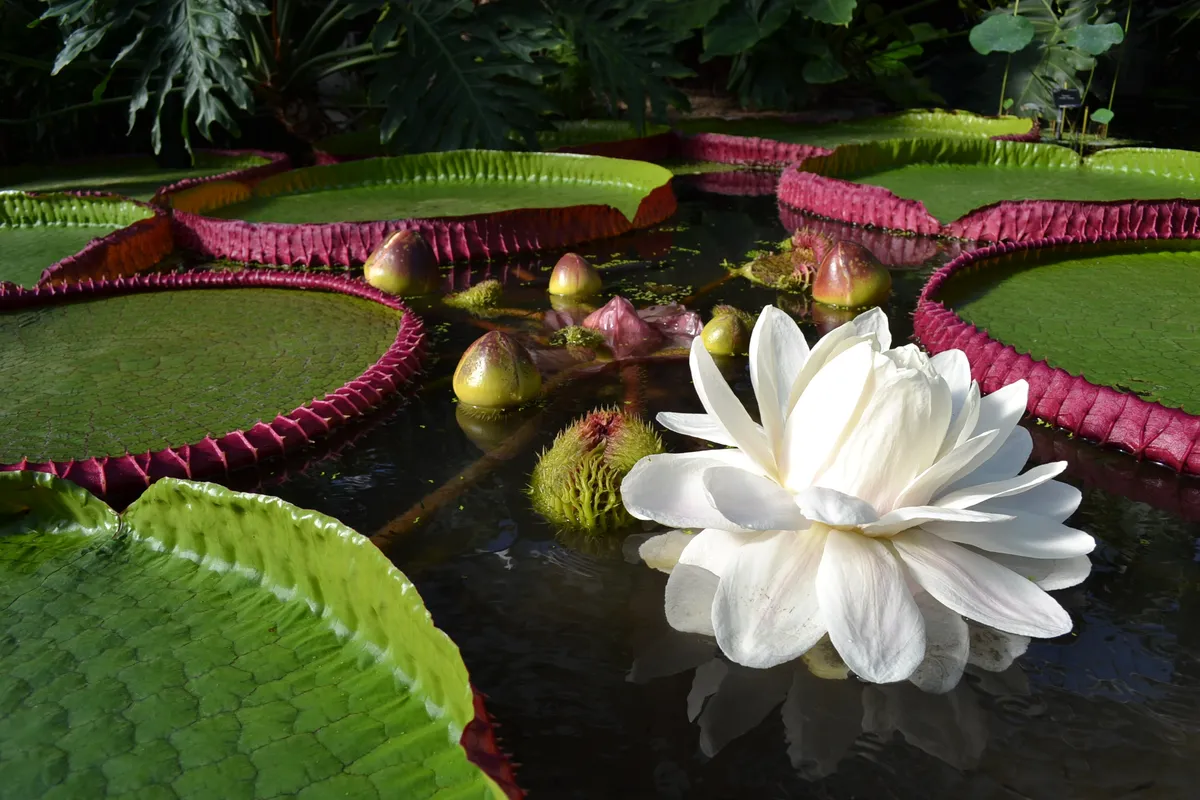
Meet the world’s largest water lily – a species that has been hiding under the noses of scientists since the 1800s. Horticulturist Carlos Magdalena has suspected that it was a different species to V. amazonica and V. cruziana, and working with seeds donated from scientists in Bolivia and the botanical illustrator Lucy Smith, he was able to prove his hypothesis.
The plant was grown in the Royal Botanic Gardens, Kew in London and is present in other aquatic collections too. In the wild, it grows in Bolivia in the Mamoré river basin, which is part of the Amazon river system. However, a photographic record suggests that it may also be present in the nearby Beni river.
The genus was named in honour of Queen Victoria, and the specific name of ‘boliviana’ refers to where the species is found.
Read the full paper in Frontiers in Plant Science.
Giant keelback slug (Limax pseudocinereoniger), Montenegro
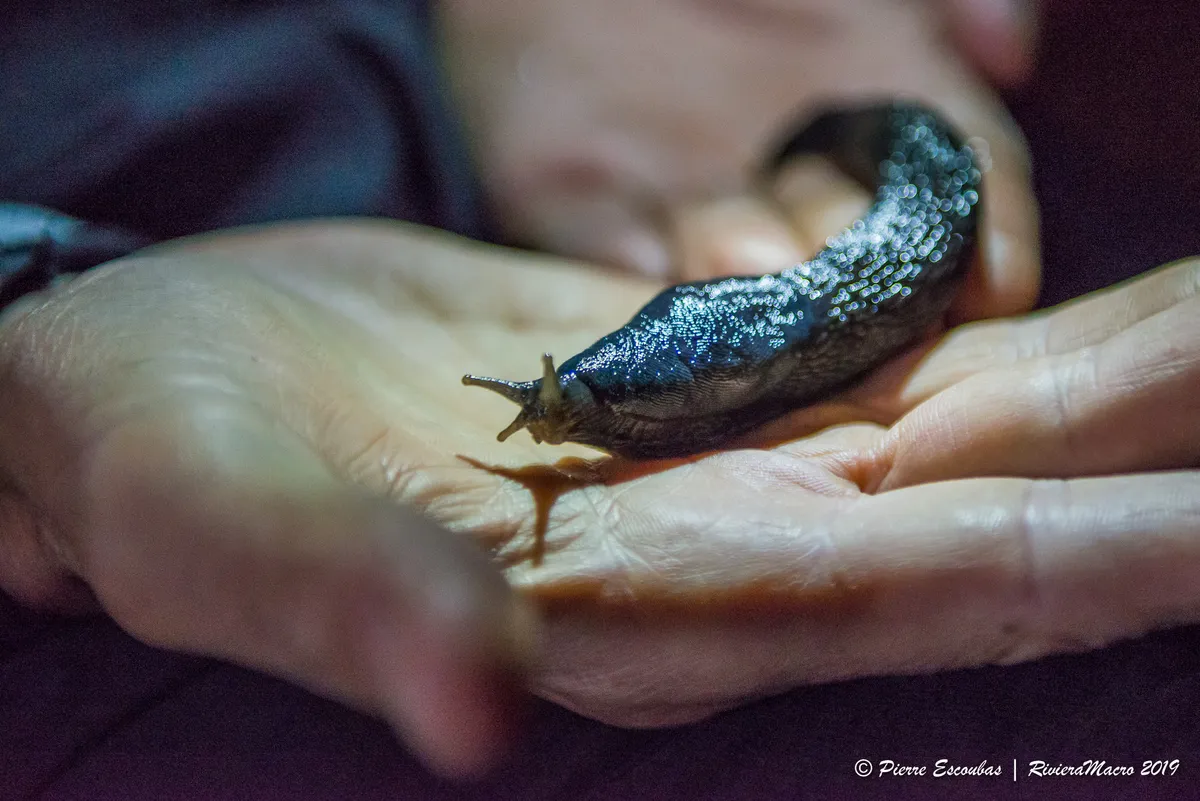
Meet Europe’s newest slug species – which is as big as a medium-sized carrot! It is brown-grey in colour, with a ridge along its back and measuring 20cm in length. It might seem odd that such a large animal could go undiscovered for so long in Europe, which has well-studied fauna and flora, but it’s been wandering about under the guise of a closely related species, L. cinereoniger.
An international team of citizen scientists were taking part in a field trip by Taxon Expeditions, and were exploring Tara Canyon in Montenegro. This is Europe’s largest and deepest gorge, and is part of a rafting route along the Tara River. The scientists were exploring the canyon on inflatable rafts and found these slugs hidden beneath the rock overhangs within the narrowest part of the ravine, where L. cinereoniger is also found. Further morphological and genetic analysis showed that the two slugs are different species, including differences in the reproductive organs.
The scientific name of this new species ‘pseudocinereoniger’ includes the prefix of ‘pseudo-’, which comes from the Greek word ‘pseudes’ meaning ‘false’, so the name refers the species’ superficial similarity to L. cinereoniger.
Read the full paper in Biodiversity Data Journal.
Burneo’s Oldfield mouse (Thomasomys burneoi), Ecuador
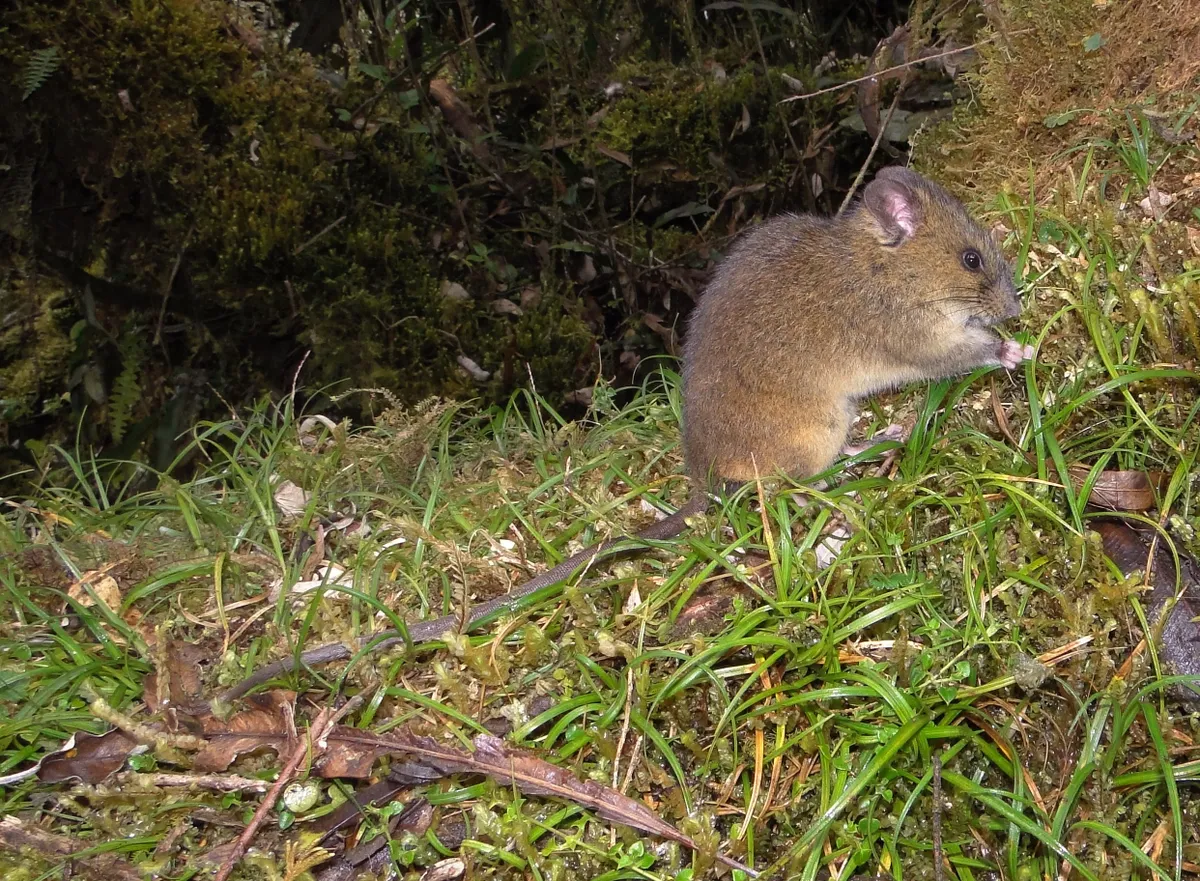
Ecuador has gained a new species of Andean mouse thanks to a recent paper describing Thomasomys burneoi, found in the remote and difficult to access wet montane forest of Sangay National Park in the Andes, at elevations of between 3,400-3,900m. Measuring between 167-184mm in length, this is the largest of the Thomasomys species in Ecuador.
The description of this mouse increases the number of Thomasomys species to 48, 18 of which can be found in Ecuador.
The species name of ‘burneoi’ honours the Ecuadorian mammalogist Santiago F. Burneo from the Pontifical Catholic University of Ecuador, “in in recognition of his teaching and support of mammalogists both in Ecuador and the United States of America.”
Read the full paper in Vertebrate Zoology.
Jiangxi giant salamander (Andrias jiangxiensis), China
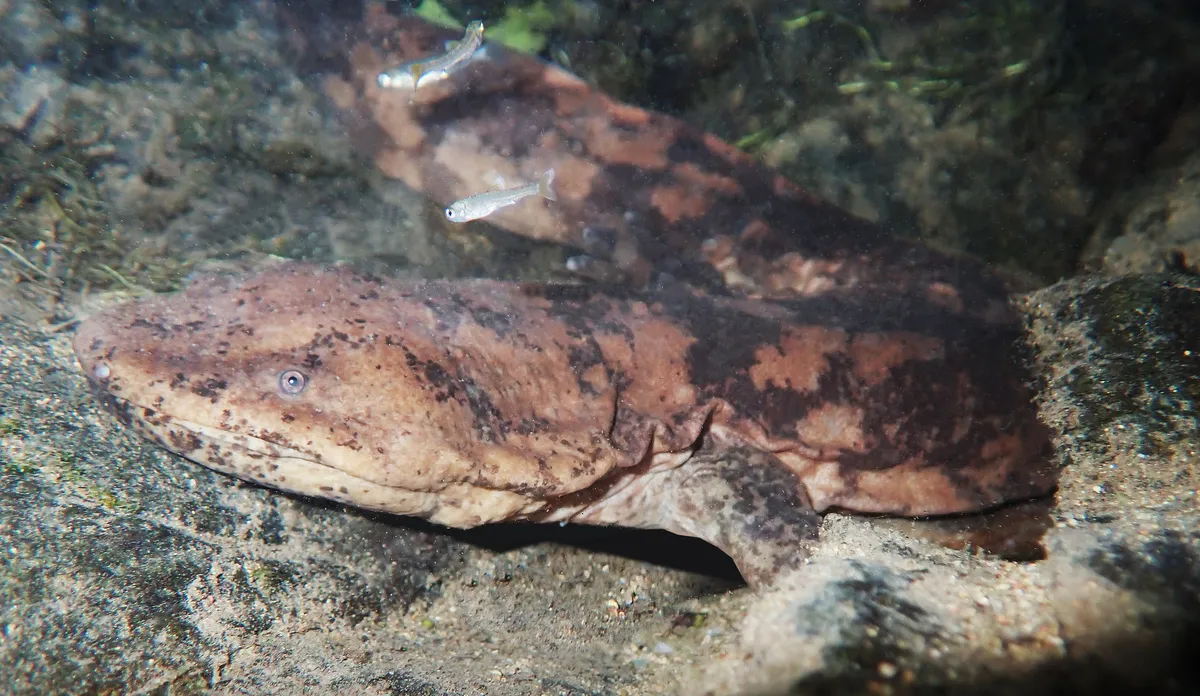
Nicknamed as “living fossils”, the giant salamanders are impressive amphibians that can reach almost two metres in length. Recent work has been splitting the salamanders into separate species. A study published in 2018 predicted that the Chinese giant salamander (A. davidianus) consisted of at least five different species, and a 2019 paper described the South China giant salamander (A. sligoi) as a distinct species – and as the largest amphibian in the world.
Scientists have now described another species as distinct from the Chinese giant salamander, which they have called the Jiangxi giant salamander (A. jiangxiensis), with both ‘Jiangxi’ of its common name and ‘jiangxiensis’ of its scientific name derived from the locality in which it is found: the Jiangxi Province.
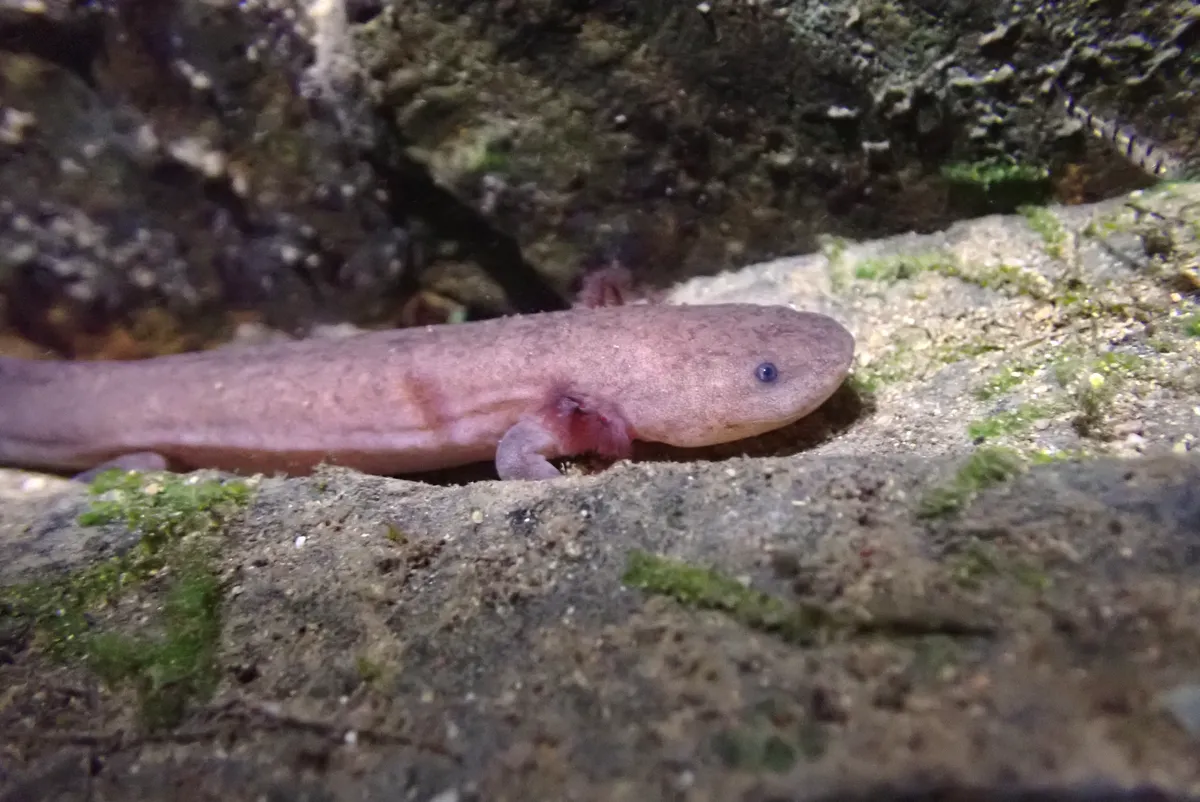
Most wild giant salamanders in China are releases from salamander breeding farms, derived from different lineages or as hybrids. However, the Jiangxi giant salamander does have a genetically pure wild population, found in Jiulingshan National Nature Reserve. It is also present in two small-scale farms, but those populations also consist of only this species.
The scientists recommend that the species is listed as critically endangered on the IUCN Red List, due to its limited distribution and vulnerability to environmental changes.
Read the full paper in Zoological Research.
Scorpions (Euscorpius latinus, E. stefaniae, E. trejaensis and E. niciensis)
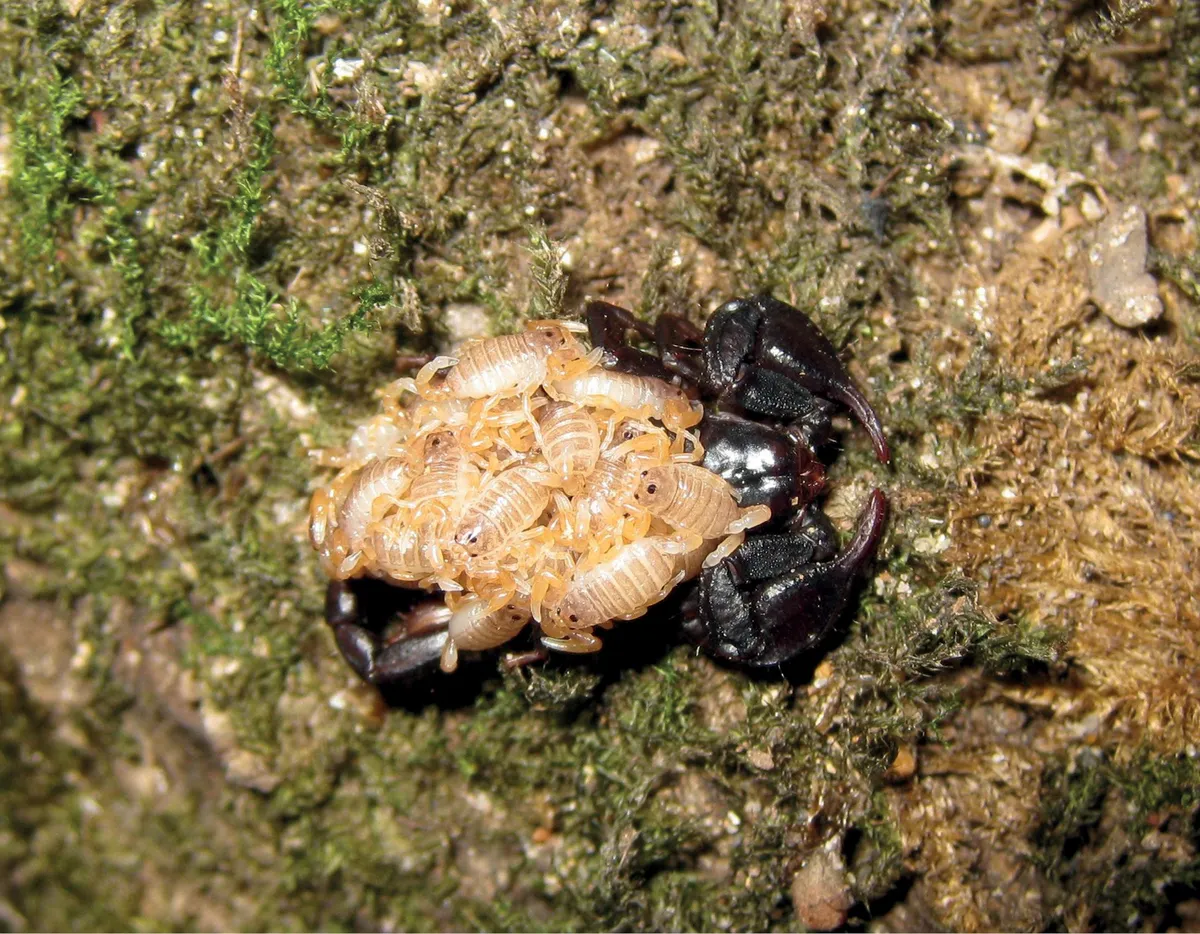
A paper examining the genetic, morphological and geographical differences in the scorpions of the Euscorpius complex (a group of very similar species) in Italy and France has described three new-to-science scorpion species (Euscorpius latinus, E. stefaniae and E. trejaensis), whilst another subspecies (E. niciensis) has been elevated to species level.
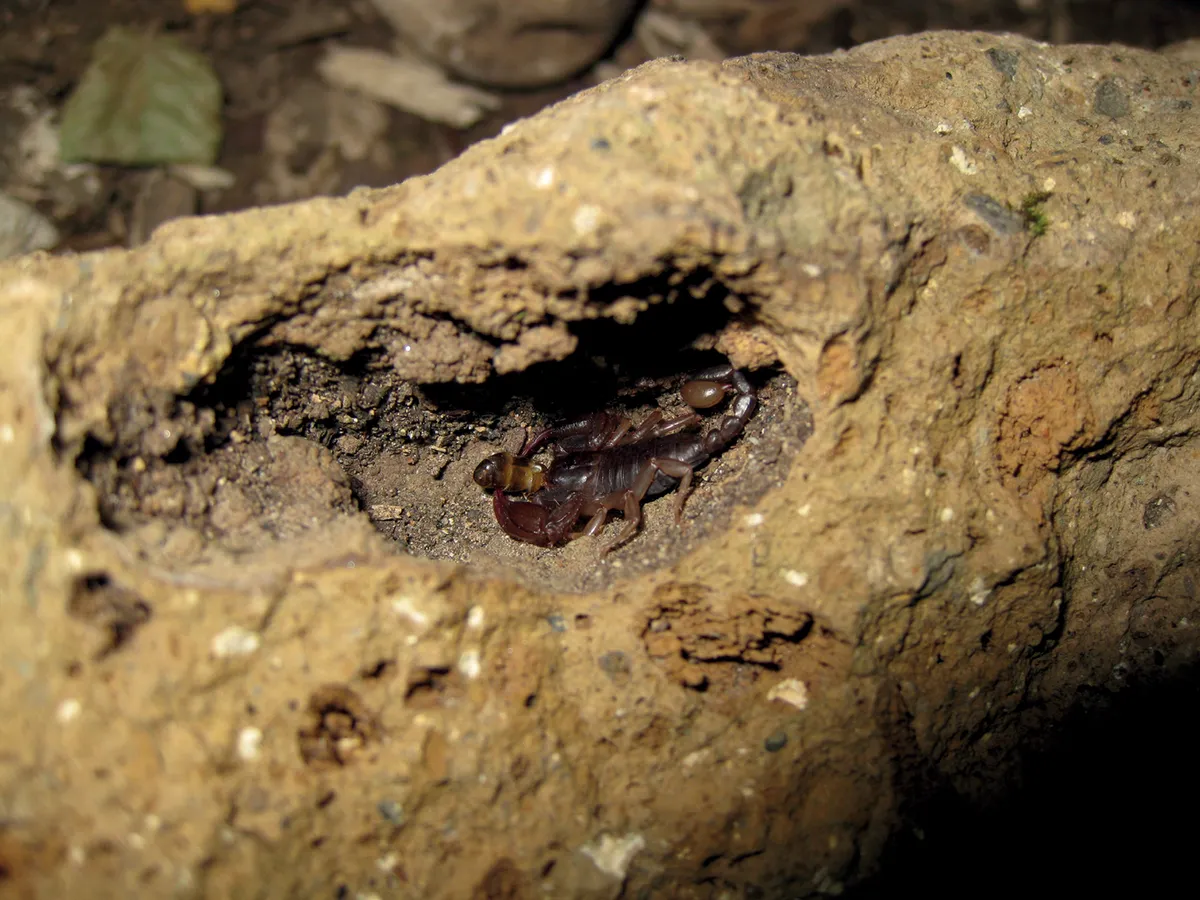
The three newly described species are all found in Italy. The epithet ‘latinus’ means Latin, as the species’ range includes the first area that the Latin tribe and their Latin language spread.
‘trejaensis’ is derived from the Treja river, which flows through the valley where the first specimens of E. trejaensis were collected, whilst ‘stefaniae’ honours the sister of the paper’s first author, Stefania Tropea, for “her kind support and enthusiasm shown in several field trips”.
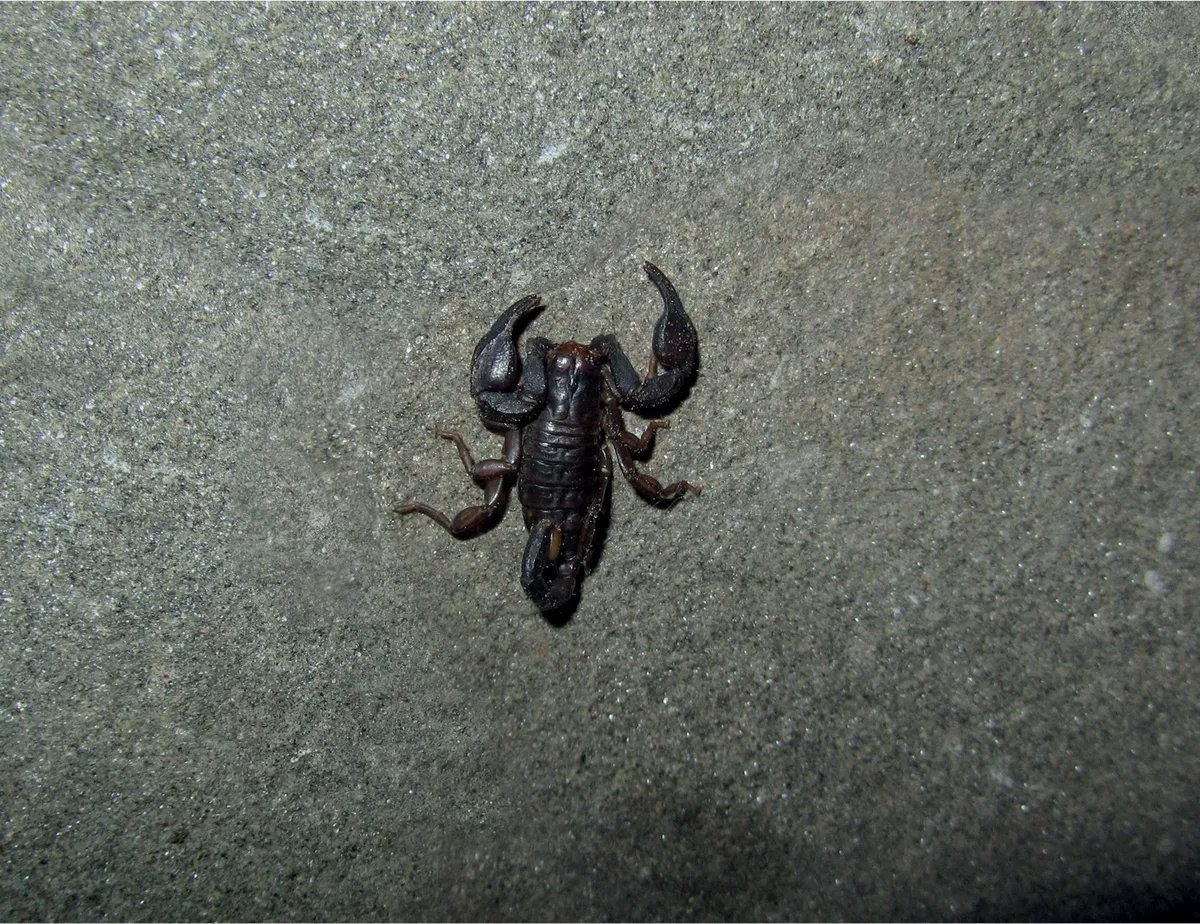
Read the full paper in ZooKeys.
Fish (Poecilocharax callipers and P. rhizophilus), Brazil
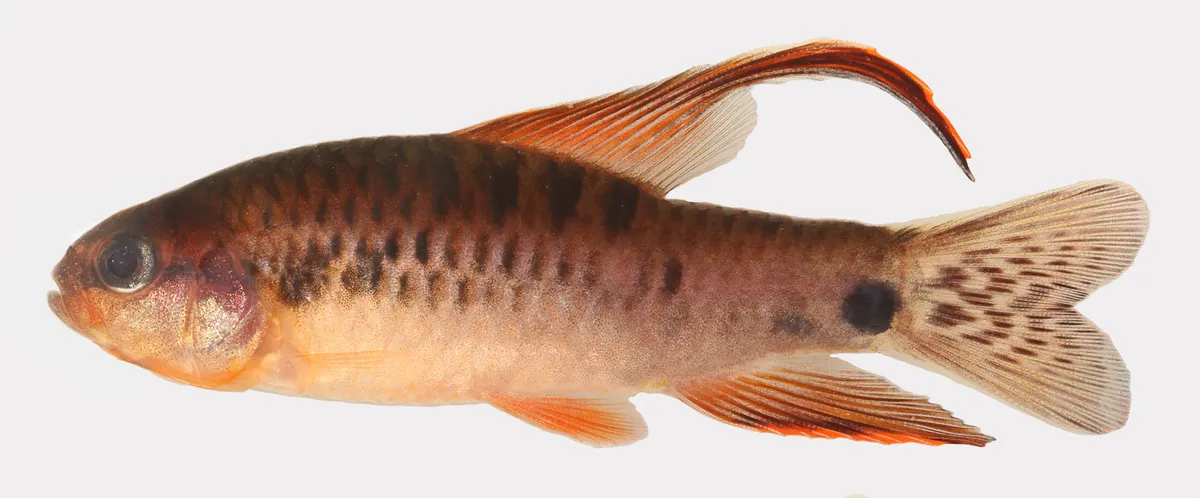
Scientists have described two new fish species of South American darters in the Poecilocharax genus, the first to described in the small sub-family Crenuchinae in 57 years. P. callipterus (pictured above) males have red-orange fins and a distinctive dark spot in front of the tail, whilst P. rhizophilus (pictured below) is amber yellow and is so small that it is considered a miniature fish – i.e. less than an inch long when mature.
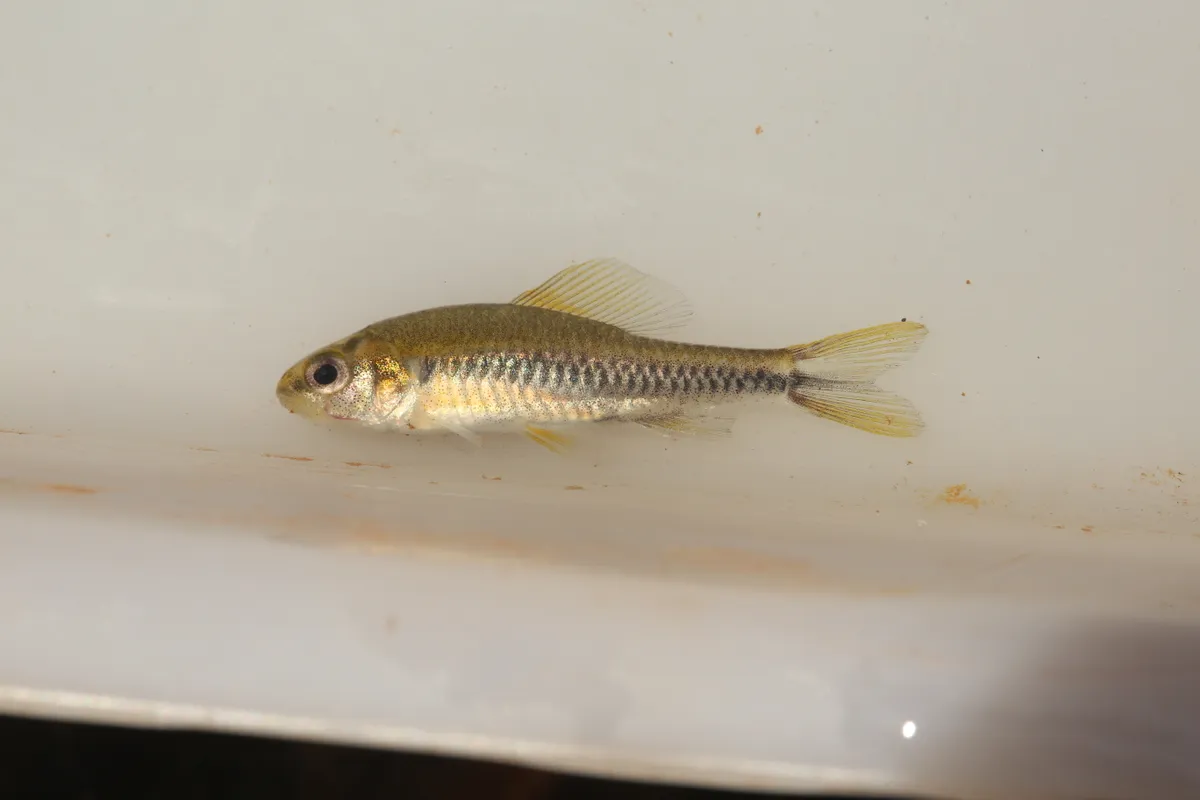
Both species were found during scientific surveys during 2015 and 2016 in the Apuí region, in streams roughly 25 miles north of the Brazilian city of Apuí, at the edges of human encroachment into Amazon rainforest. Despite repeated surveys in nearby streams, P. callipterus has only been found in one stream, which is a black water stream – named for the dark coloured water stained by the tannins from fallen leaves. P. rhizophilus was found in streams with muddy waters (but not black water streams), specifically amongst the tree roots that emerged from the banks into the water.
The specific epithet ‘callipterus’ is a Latinized version of the Greek words ‘kalli’ (meaning beauty) and ‘pteron’ (meaning feather or wing), and refers to the pretty dorsal fin of the adult males. For the miniature fish, ‘rhizophilus’ is a Latinized version of the Greek words ‘rhiza’ (meaning root) and ‘philos’ (meaning friend), and refers to the subaquatic roots amongst which this species was collected.
Read the paper in the Zoological Journal of the Linnean Society.
Spiny lizard (Sceloporus huichol), Mexico
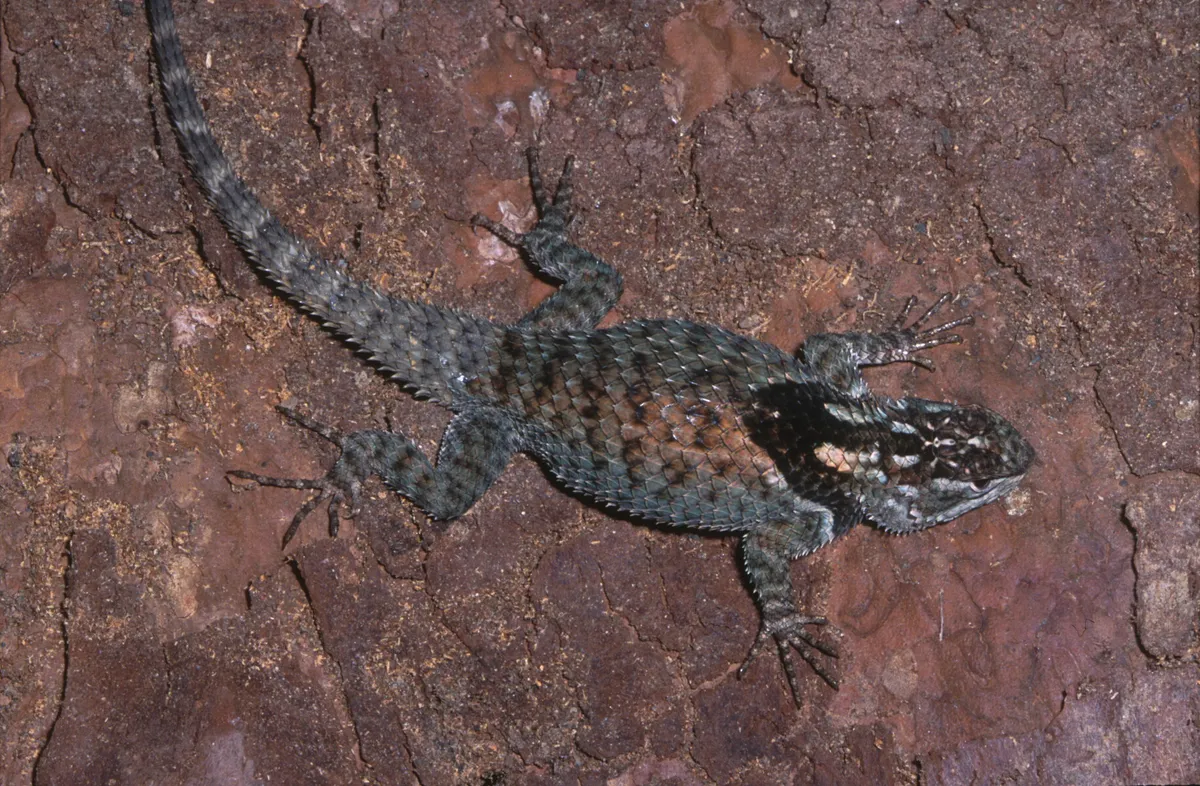
Part of the Sceloporus torquatus species complex (a group of species within a genus that are close, but distinct from each other), S. huichol is a newly described species of spiny lizard. Other common names for lizards in this genus include fence lizards and scaly lizards. Scientists examined specimens from eight museum and university collections, and found differences in morphology, colour patterns and genetics from similar species, as well as habitat preferences.
S. huichol lives the semi-xeric pine and oak forests in the mountains of Nayarit and Jalisco, a region in in west-central Mexico which has been relatively unexplored by scientists. Another reptile (a snake) was described from this region in 2007 and it’s thought that more undescribed species may be found there.
The specific epithet ‘huichol’ honours the Huichol tribe of Mexico who live where the species is found, who also refer to themselves as Wixáritari (“the people”) in their native language.
Read the paper in Zootaxa.
Spiny horntail dragonfly (Burmagomphus chaukulensis), India
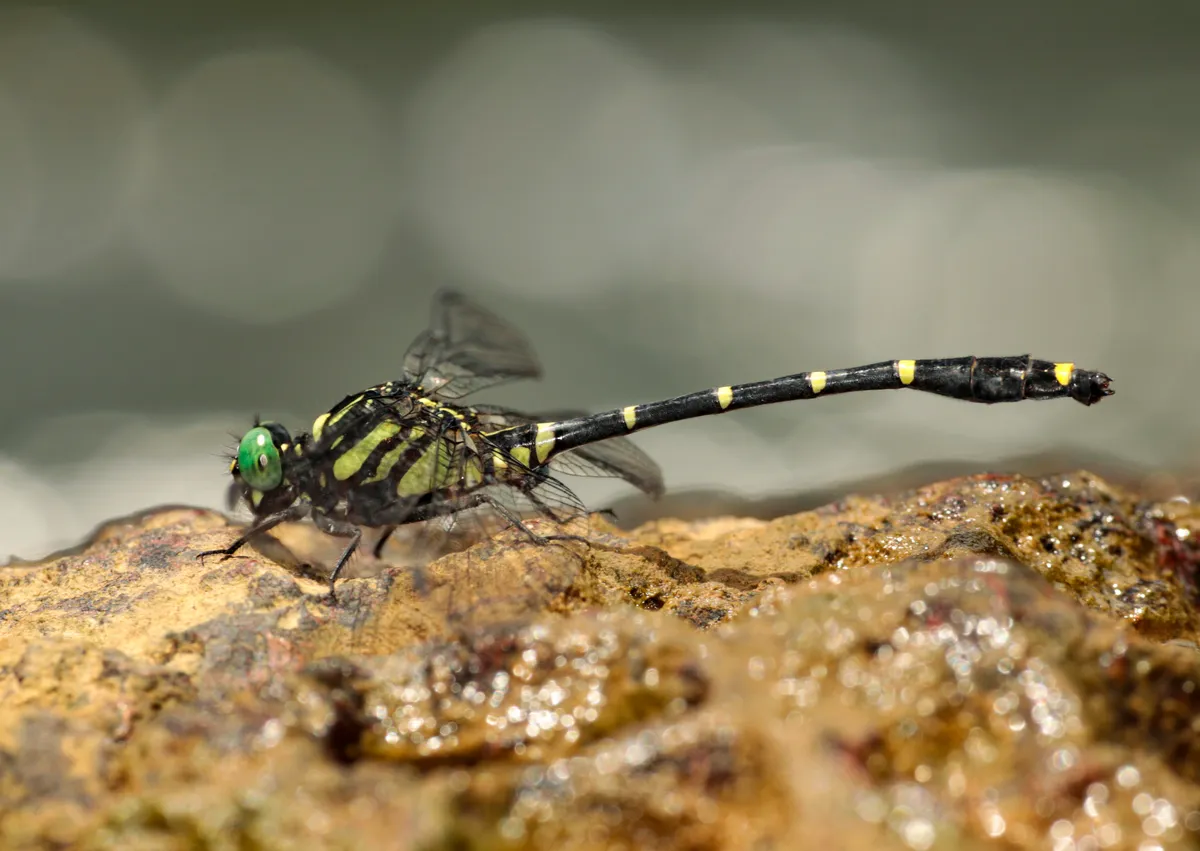
When Hemant Ogale photographed a dragonfly at a stream, he found that he was unable to identify it and shared it with fellow naturalists, who were also puzzled by it. This prompted collection of some voucher specimens and analysis showed that it had different markings and shape of the males’ genitalia, including the shape of the hamuli (the males’ secondary genitalia).
The species was first photographed and collected from a fast-flowing stream near to the village of Chaukul in the state of Maharashtra in India. It is part of the Western Ghats biodiversity hotspot, which is a UNESCO World Heritage Site and home to at least 5,000 species of animals and plants. The hotspot is home to over 190 species of Odonata (dragonflies and damselflies), around 40 per cent of which are endemic.
The specific epithet ‘chaukulensis’ is derived from village of Chaukul, whilst the common English specific epithet ‘Spiny’ refers to the spines on the males’ hamuli. The scientists also proposed a genus name of ‘Horntail’ based on the shape of the appendages at the end of the tail, and in the absence of an existing name for the genus.
Read the paper in Zootaxa.
Chiriquí fire salamander (Bolitoglossa cathyledecae), Panama
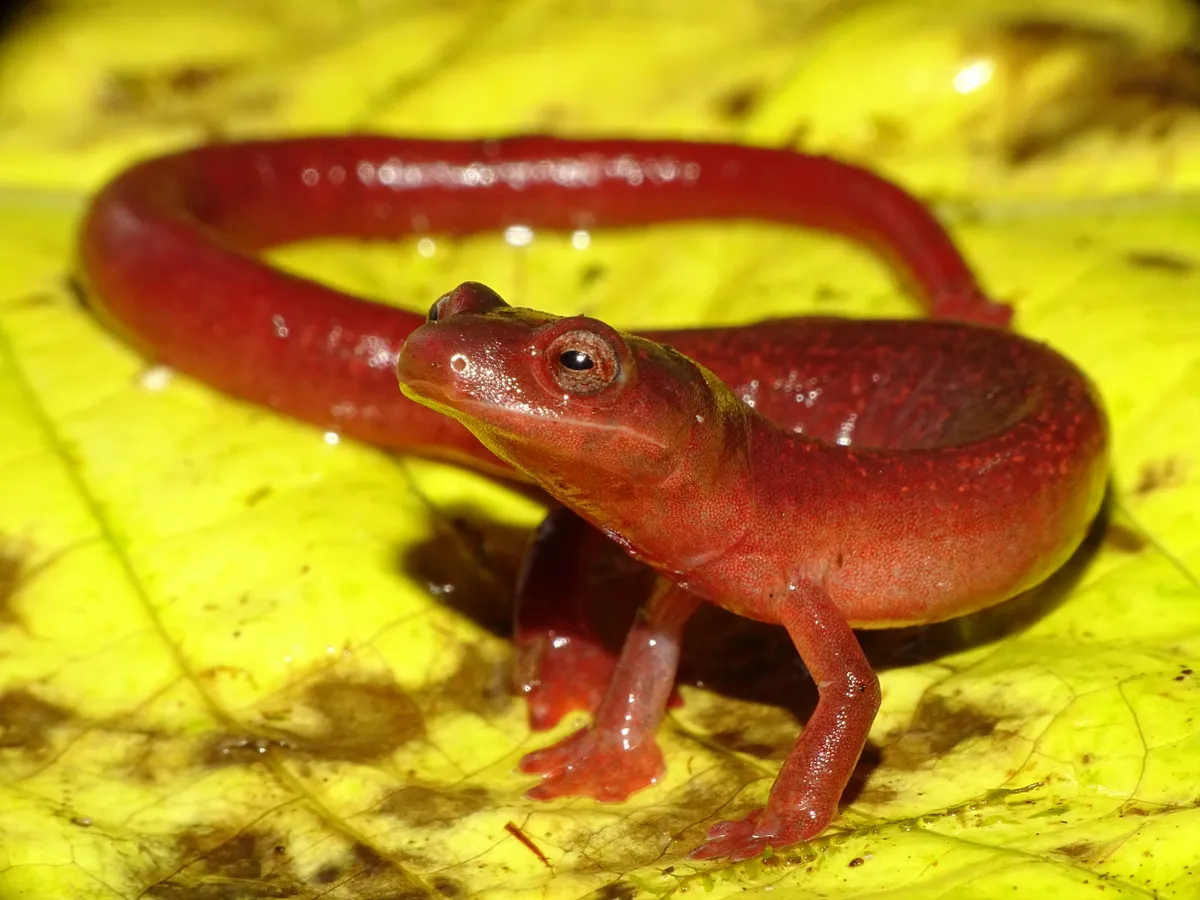
This brightly coloured amphibian is a newly described salamander, discovered during an expedition of Panamanian scientists. The species can be distinguished from its close relatives by its colours, webbing on its hands and feet and its number of upper teeth, and its status as a separate species was confirmed by genetic analysis. The scientists suggest that it is classified as critically endangered on the IUCN Red List, due to its restricted distribution and the likelihood of anthropogenic pressure in the area.
The team had been investigating the Panamanian side of Cordillera de Talamanca, a mountain range in southeast of Costa Rica and the west of Panama, which is includes La Amistad International Park. It is considered one of the least-explored regions of Central America, and has one of the highest diversity of salamander species in the Neotropics. This particular species was found in the Boquete district in the Chiriquí province.
The scientists honoured the conservationist Cathy Ledec with the specific epithet ‘cathyledecae’, whilst the common English name indicates the species’ location.
Read the paper in Zootaxa.
Sponge crab (Lamarckdromia beagle), Western Australia
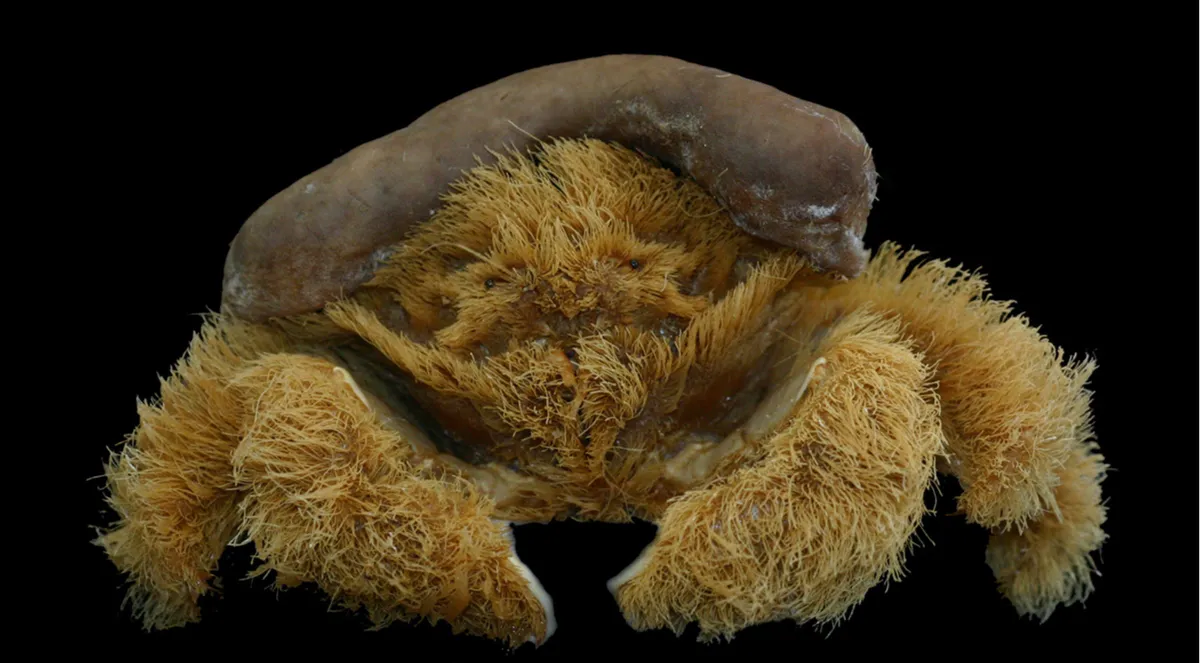
Sporting a sea sponge beret and a fluffy coat, this crab has got to be one of the most stylish crustaceans in our oceans. It was recently described as a new species after a specimen was found washed up on a beach in Denmark, Western Australia. The family that found the crab sent it off to the Western Australian Museum for identification, and scientists realised that it was an undescribed species. Further examination of crab specimens in the museum revealed that some were actually Lamarckdromia beagle as well, with the earliest dating from 1925.
The crab belongs to the Dromiidae family, which are known as sponge crabs and use sea sponges and ascidians (such as sea squirts) to provide protection, particularly the sponges that produce unpleasant chemicals to deter predators. The sponges and squirts are held in place by tiny pincers on the hind legs, rather than being directly attached to the crabs.
The ‘beagle’ epithet is derived from both its tanned colouration (like a beagle) and the HMS Beagle ship, which Charles Darwin travelled on between 1831 and 1836. His findings during this trip, which included visiting Australia, the Galápagos Islands and Tierra del Fuego, led to his theory of evolution.
Read the paper in Zootaxa.
Millipede (Nannaria swiftae), USA
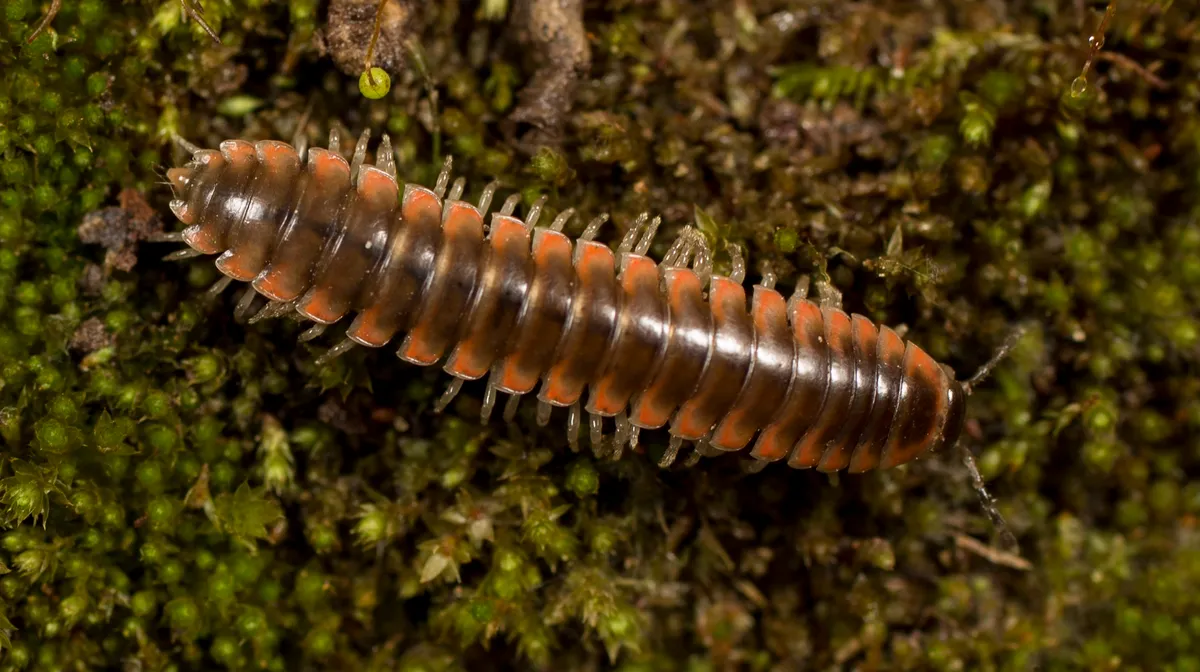
One of 17 newly described millipede species, Nannaria swiftae appears in a recent paper by three myriapodologists (scientists studying myriapods) examining the taxonomy of twisted-claw millipedes in the Nannaria wilsoni group. Alongside examining genetics, one of the millipedes’ key differences looked at by the researchers was the morphology of the male’s modified legs, which are used for sex.
The 17 new species brings the number of Nannaria species up to 78 in total – the genus had just 23 before these scientists starting studying them in 2015 (a March 2021 paper added 2 new species bringing it up to 25, an April 2021 paper added 35 new species and raised a subspecies to full species status bringing it up to 61).
All 17 news species are found in the valleys of the Appalachian Mountains, a range that extends from Central Alabama in the USA to the island of Newfoundland in Canada.
The ‘swiftae’ in the scientific name honours the famous US singer and songwriter Taylor Swift, because Dr Derek Hennen, the lead author of the study, is a Swiftie (a fan). He also named a species after his wife, N. marianae, as “a small thank you for all her patience when we’re taking a nature hike and I stop to look for millipedes.”
Read the full paper in ZooKeys.
More species named after people:
Rose-veiled fairy wrasse (Cirrhilabrus finifenmaa), Maldives
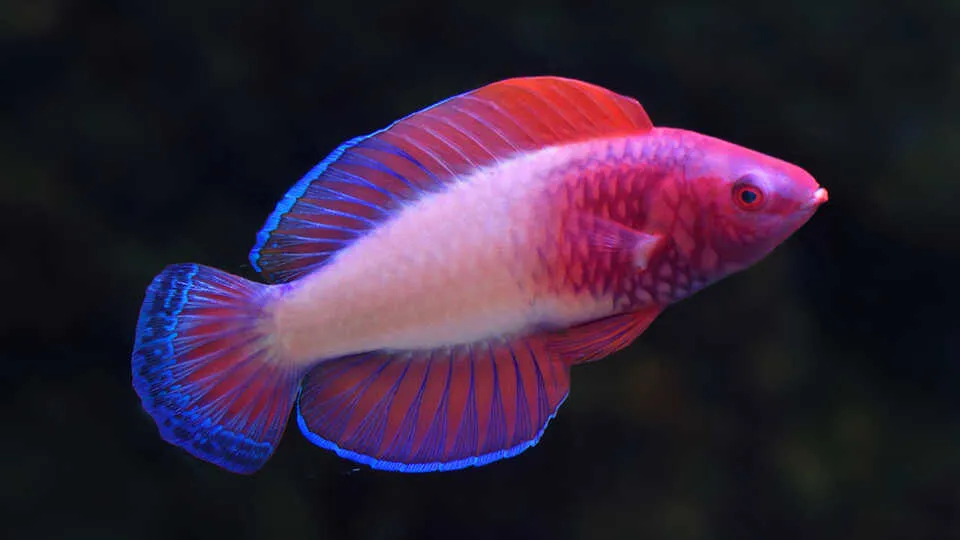
Originally thought to be an adult of a different fairy wrasse species, Cirrhilabrus rubrisquamis, further analysis of both adults and juveniles of this beautiful fish has revealed that it is in fact a separate species. It has been named the rose-veiled fairy wrasse (Cirrhilabrus finifenmaa).
The new species is found off the coast of the Maldives, and is one of the first-ever to be formally described by a Maldivian researcher. Ahmed Najeeb from the Maldives Marine Research Institute collaborated from scientists from the California Academy of Sciences, the University of Sydney, and the Field Museum, and the research was part of the Academy’s Hope for Reefs initiative.
The species name ‘finifenmaa’ is derived from the local Dhivehi language and means ‘rose’. This is a nod to both the Maldives’ national flower and the stunning pink hues of the wrasse. It is one of the first species to be named in Dhivehi.
Read the full paper in ZooKeys.
Snake (Phalotris shawnella), Paraguay
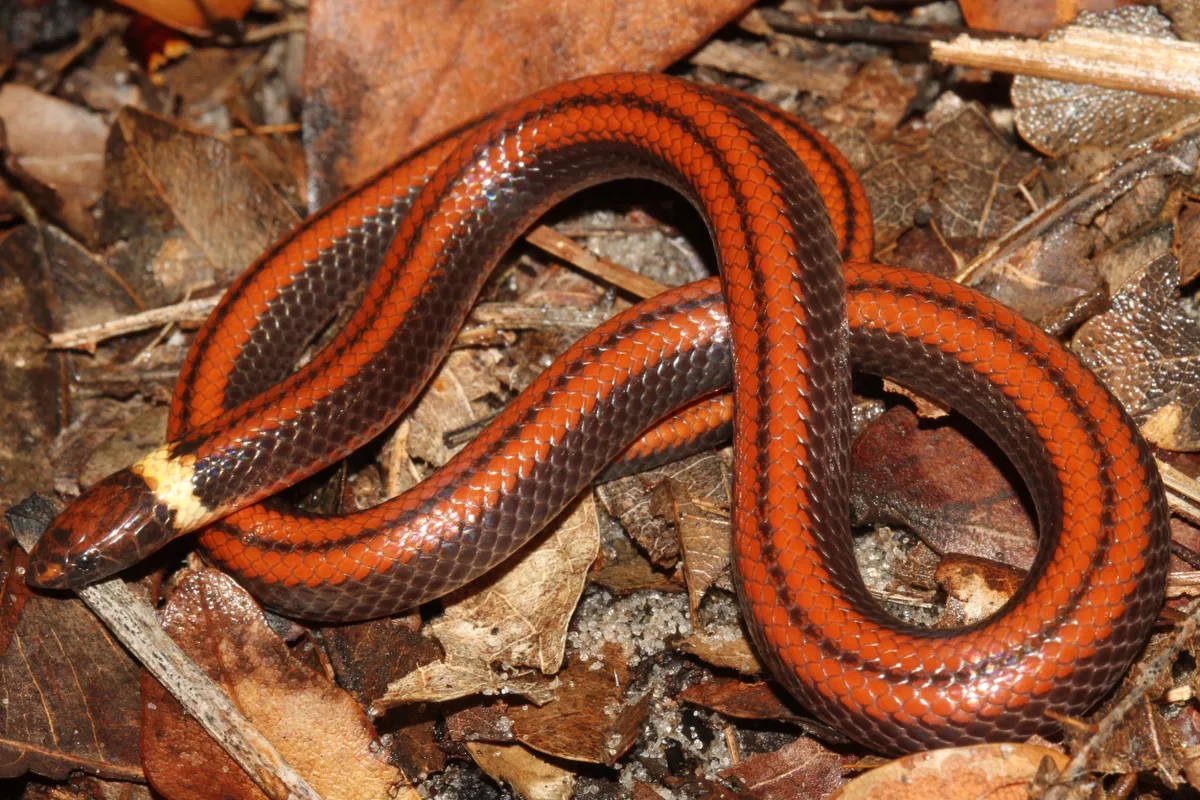
With its striking bright red colouration, dark lines and yellow neck patterning, this snake is a newly described species in the Phalotris genus. It was found by chance in 2014 by a scientist from the Para La Tierra conservation organisation was digging a hole whilst undertaking some fieldwork and is known from only three individuals. It’s thought that it may be a forest species, and the combination of its small range, fragmented habitat and ongoing agricultural work in the range have resulted in the scientists recommending that it is classified as endangered on the IUCN Red List.
Two individuals of this snake were first found at the famous tourist destination of Rancho Laguna Blanca in Paraguay, and then followed by another specimen photographed at Colonia Volendam, 90.5km away. Laguna Blanca was formerly officially protected, and was recognised as the first Paraguayan Important Area for the Conservation of Amphibians and Reptiles, however it currently has no legal protection.
The specific epithet ‘shawnella’ is the combination of two people’s names: Shawn Ariel Smith Fernández and Ella Bethany Atkinson, who were both born at around the same time that the Para La Tierra was formed and inspired its founders to conserve Paraguayan fauna.
Read the paper in Zoosystematics and Evolution.
Tapir frog (Synapturanus danta), in the Putumayo Basin, Peru
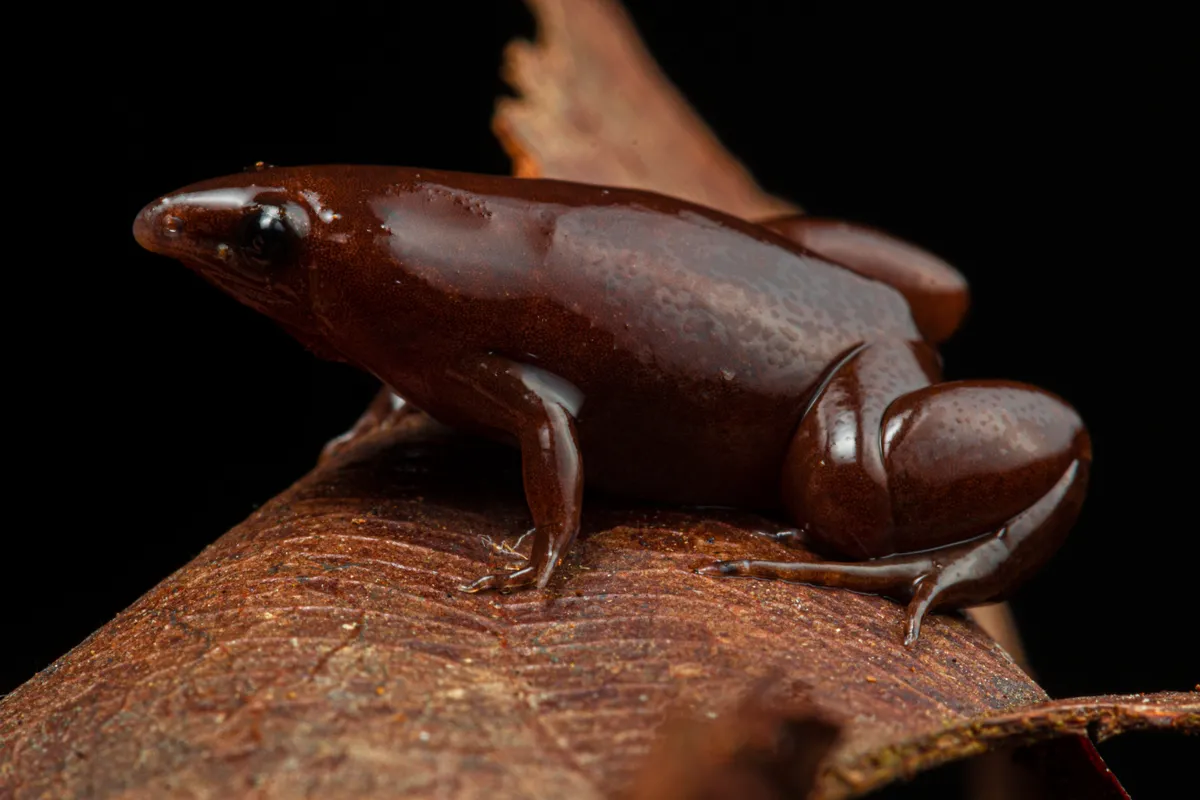
Like other fossorial (burrowing) species, the newly described Synapturanus danta was not easy to find. The frog was discovered in the Putumayo Basin of Peru, by researchers undertaking a ‘rapid inventory’ biological record for Chicago’s Field Museum.
Researchers spent only a few days at each site for rapid inventories and came across a juvenile frog during their first night exploring an area of Amazonian peatland, a rare and understudied habitat.
Further detection work was required to identify calls and track down two adult males. Analysis revealed that the three frogs were from an undescribed species.
The discovery of this new frog quickly garnered a lot of attention when it was announced on social media, with many people comparing it to the chocolate frogs from the Harry Potter books and films. But its common name, tapir frog, comes from the species’ tapir-like nose. The people of Comunidad Nativa Tres Esquinas, familiar with the frog, refer to it as the rana danta, ‘danta’ being the local word for tapir.
Read the full paper in Evolutionary Systematics.
Tree (Uvariopsis dicaprio), in the Ebo Forest, Cameroon
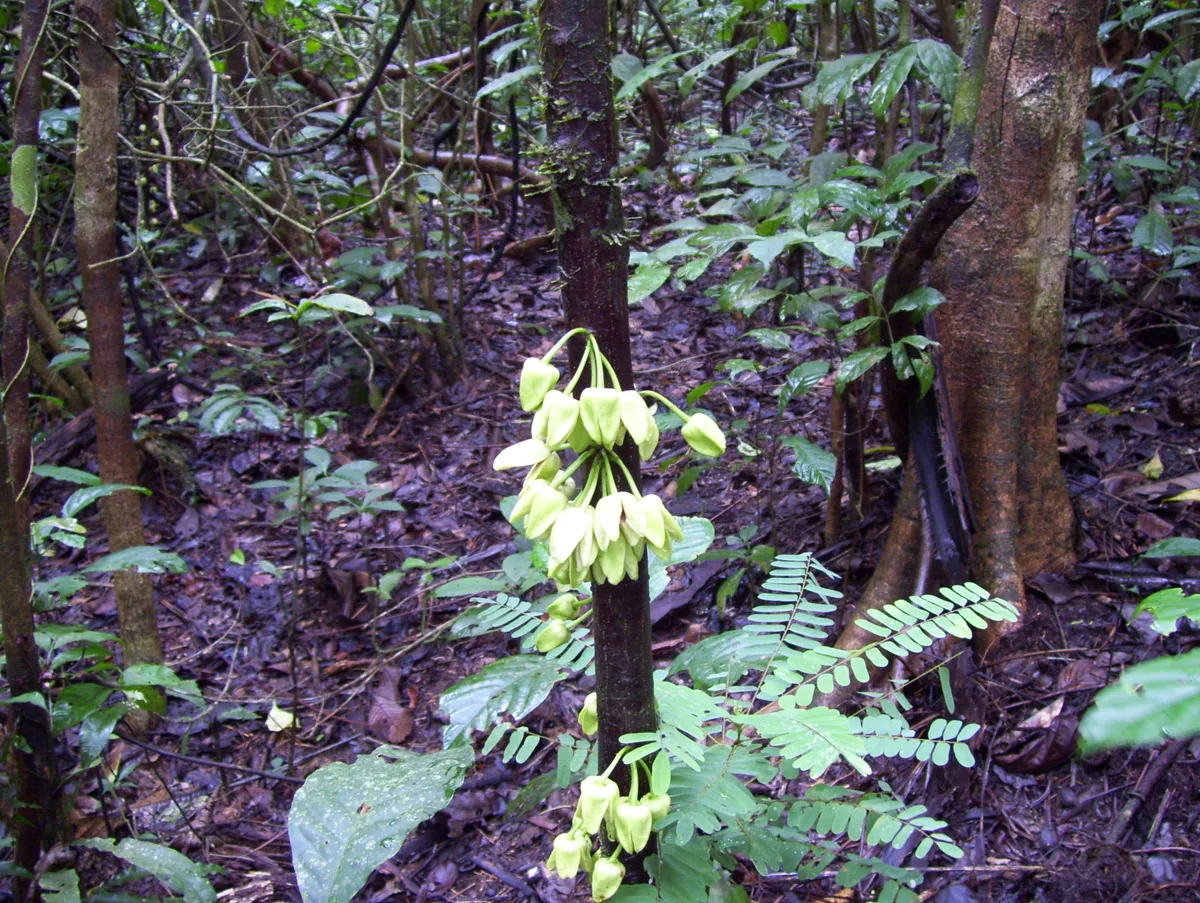
A tropical tree in the ylang-ylang forest, this species was the first addition to the 2022 new species list by the scientists at the Royal Botanic Gardens, Kew (RGB Kew), who were working with the National Herbarium of Cameroon. It is four metres tall, with bunches of large and glossy yellow-green flowers on its trunk, and was collected by RGB Kew scientist Lorna MacKinnon.
U. dicaprio was found in the Ebo Forest, which is one of the largest intact rainforests in Cameroon and makes up half of the Yabassi Kew Biodiversity Area. It has been relatively unknown to botanical science, and scientists have been working to document its array of species. The forest is home to the world’s only known chimps to both crack nuts and fish for termites, and is the ancestral home of several local communities.
The species was named in honour of the actor and environmentalist Leonardo DiCaprio, who used social media in February 2020 to call for a logging concession in Ebo Forest to be revoked.
“We very much appreciated the support Leo gave us in campaigning to protect Ebo last year,” says Dr Martin Cheek, senior researcher in RBG Kew’s Africa team. “So it seemed fitting to honour him in this way, naming a species unique only to this forest, after him. Had the logging concession gone ahead, we would have likely lost this species to timber extraction and slash and burn agriculture that usually follows logging concessions.”
U. dicaprio is already assessed in the paper as Critically Endangered on the IUCN Red List. Its forest habitat is unprotected and remains under threat from logging, conversion to plantation and mining.
In 2021, RBG Kew and their partners named approximately 205 plants and fungi from Africa, Asia, the Americas and even in the UK.
Read the full paper in PeerJ.
Leafhopper (Phlogis kibalensis), in Kibale National Park, Uganda
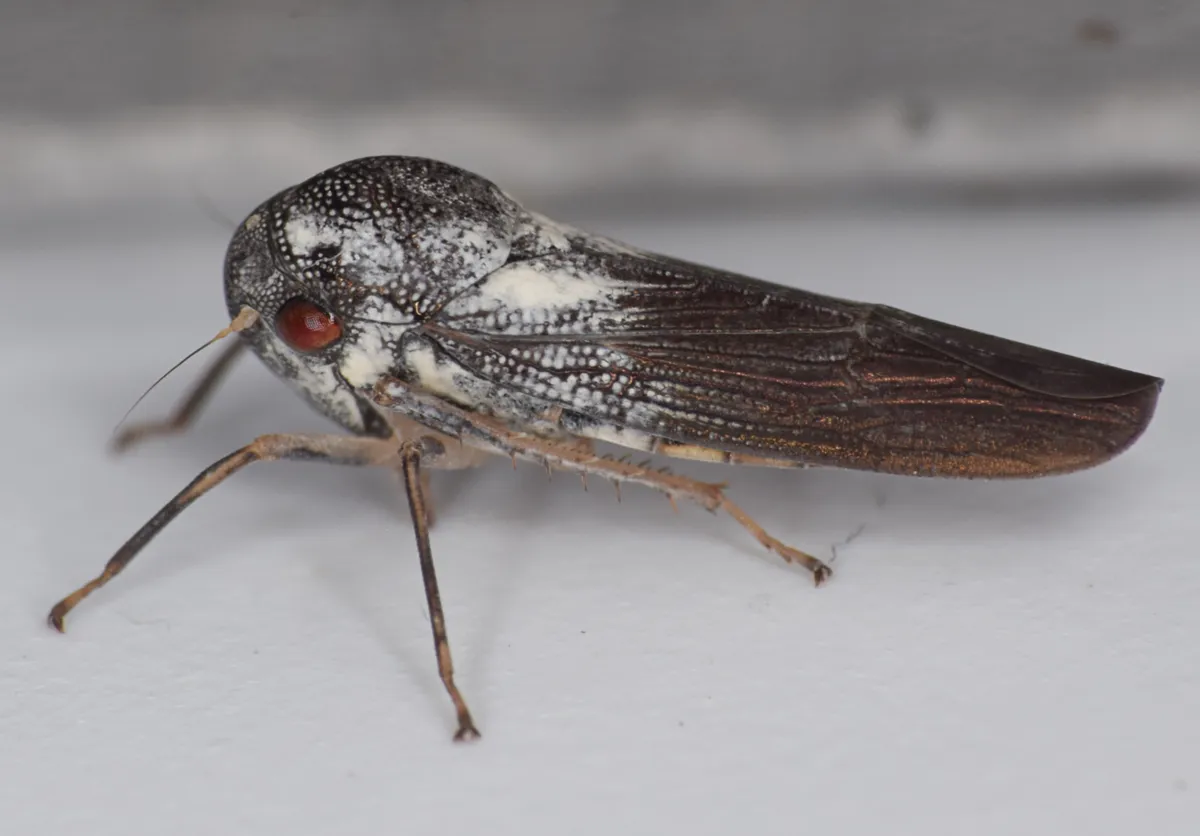
The rainforest of the Kibale National Park is well known for its diversity of primates, but during student field trips, entomologist Dr Alvin Helden of Anglia Ruskin University had been focused on documenting the insects of the park to create field guides.
One particular insect caught his eye with its metallic sheen – a unknown leafhopper, belonging to the rare Phlogis genus. So rare in fact that it’s been more than 50 years since an individual from that genus has been recorded, and that was in the Central African Republic. As a leafhopper, this new insect is part of the ‘true bugs’ order, known as Hemiptera, and almost nothing is known about its ecology.
Kibale National Park is located in western Uganda, close to the border with the Democratic Republic of Congo. It is considered one of the best locations for chimpanzee tracking, and is home to 13 primate species. The park borders the Queen Elizabeth National Park to the south, and together they create a 180km-long wildlife corridor.
The specific part of the species' name, ‘kibalensis’ refers to its discovery in Kibale National Park.
Read the paper in Zootaxa.
Peat swamp tree (Disepalum rawagambut), in Sumatra, Indonesia
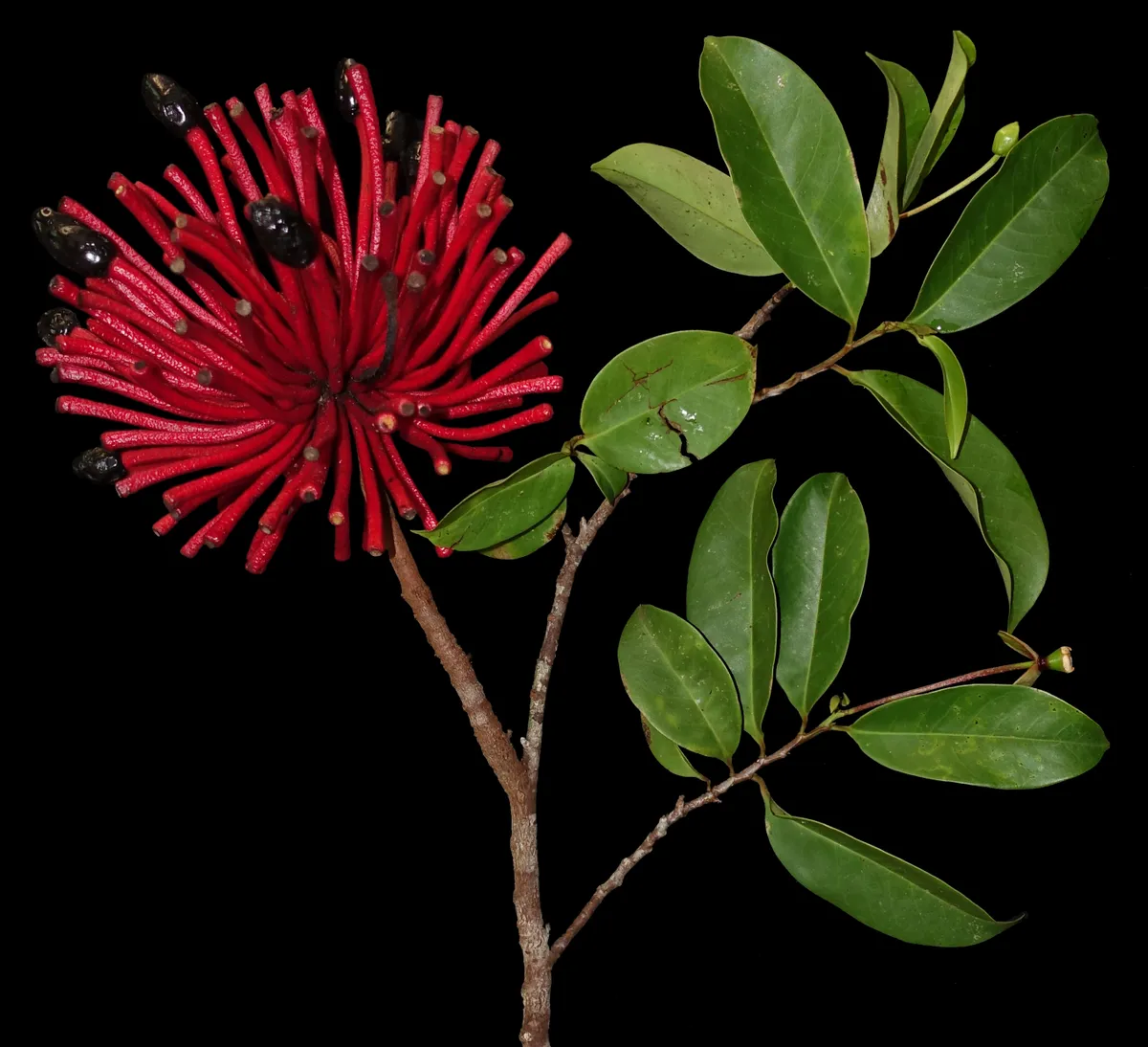
Although scientists had been working at a peat swamp field site for a number of years, they were taken aback when in 2021, there was a mass flowering event and the forest was filled with colourful flowers and amazing smells. It was during this event that they noticed that a particular tree had unusual flowers, that weren't described anywhere, and by observing the flowers and the following fruits, they were able to confirm that it was a species new to science.
The Disepalum rawagambut is the first peat swamp tree to be described since the early 1960s, as there have not been many plant-focused studies in this habitat since. The scientists involved are working to study all the peat swamp trees on their site, ranging from the scents emitted by flowers, the properties of the wood and leaves, and ecological information such as whether the trees are able to survive droughts or flooding.
It's thought that there are between 300 and 350 species of trees in peat swamp forests across Southeast Asia, and that the number is so high because the freshwater wetlands create a number of microhabitats that can support a range of species.
Read the paper in Phytotaxa.
Tarantula (Taksinus bambus), in Thailand
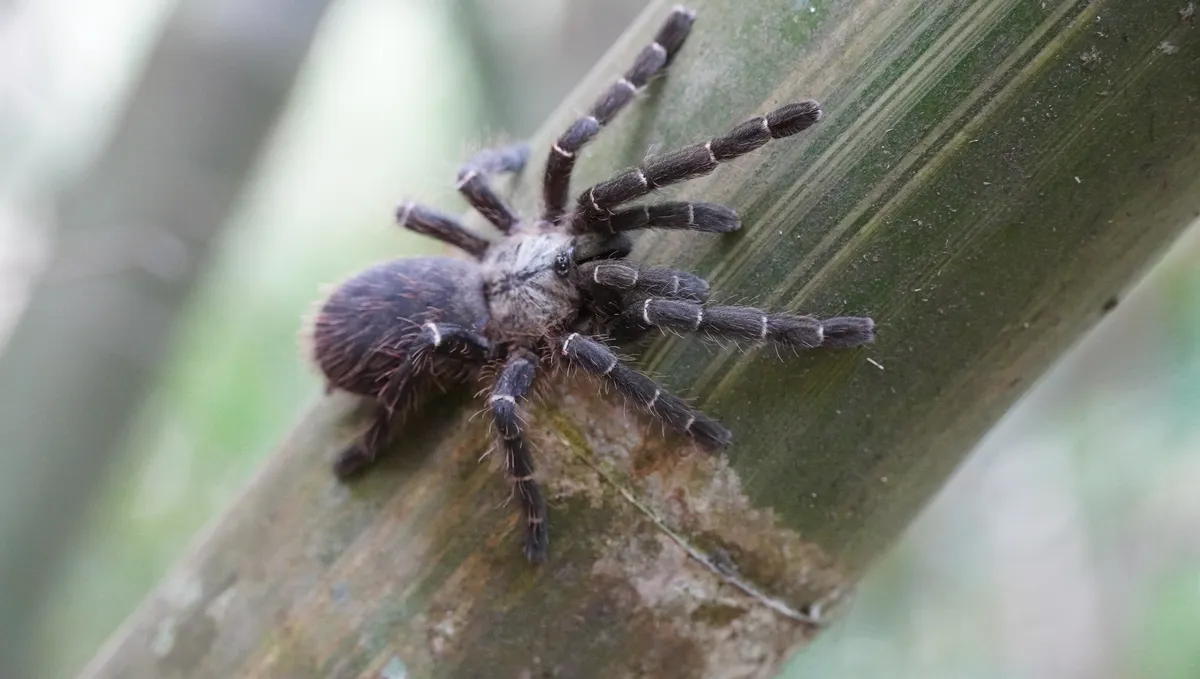
A whole new genus of tarantula was recently found and described from Thailand. It had been found by JoCho Sippawat (also known as Zongtum Sippawat), a nationally known wildlife YouTuber with over 2.5 million subscribers, who then went on to collaborate with arachnologists Dr. Narin Chomphuphuang and Chaowalit Songsangchote to describe and name the species.
Whilst it was known that tarantulas in Southeast Asia could be either terrestrial or arboreal, this is the first case of a species to be found on only one type of tree. The Taksinus bambus tarantula lives inside the culm (shoot or stalk) of bamboo. As the tarantula cannot actually make a hole into the bamboo itself, it uses the holes made by other invertebrates, small mammals or the natural process that cause bamboo cracking.
“We examined all of the trees in the area where the species was discovered. This species is unique because it is associated with bamboo, and we have never observed this tarantula species in any other plant,” says Dr Chomphuphuang. “Bamboo is important to this tarantula, not only in terms of lifestyle but also because it can only be found in high hill forests in the northern part of Thailand, at an elevation of about 1,000 m. It is not an exaggeration to say that they are now Thailand’s rarest tarantulas.”
The genus name of ‘Taksinus’ is in honour of the Thai king Taksin the Great (1734-1782), who had previously been named Phraya Tak when he was the governor of the Tak province, where this spider was found.
Read the full paper in ZooKeys.
Orchid (Gastrochilus pankajkumarii), in Vietnam
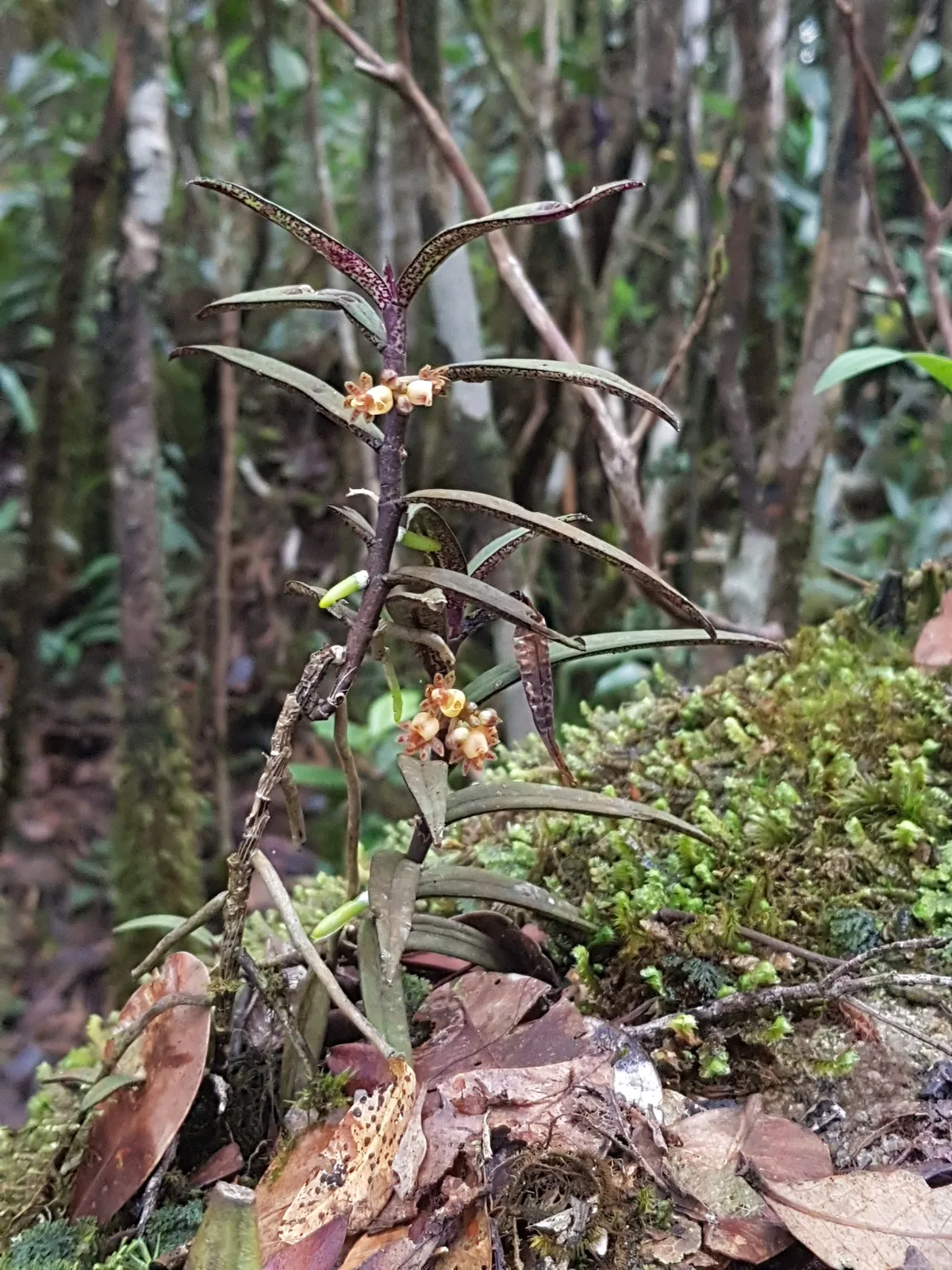
In the Central Highlands of Vietnam, a small plant rises to about 10cm in height surrounded by forest. A lithophytic plant (growing in or on plants), this newly described species of orchid has speckled leaves and yellow-orange blooms.
It is the latest addition to Vietnam's orchid species list, and its species name honours Dr. Pankaj Kumar from the Kadoorie Farm and Botanic Garden, “for his great contribution to orchid taxonomy and ecology”.
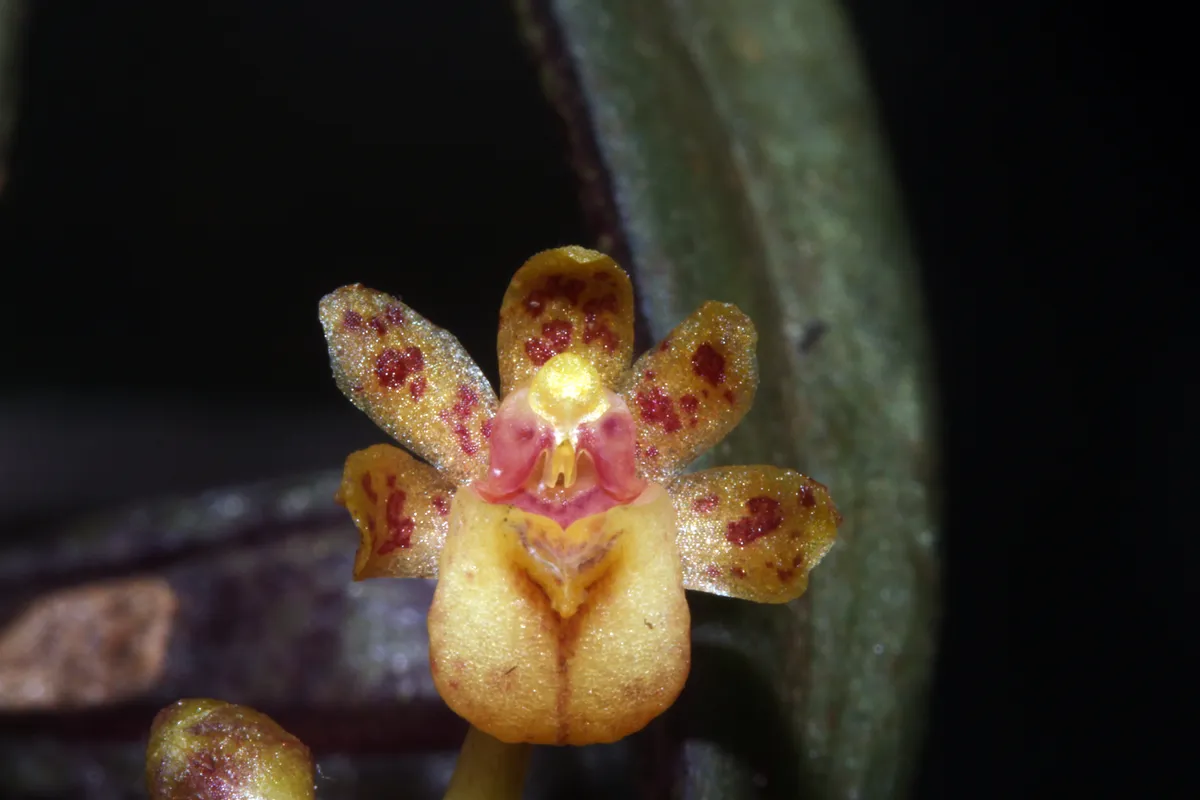
Read the full paper in Taiwania.
